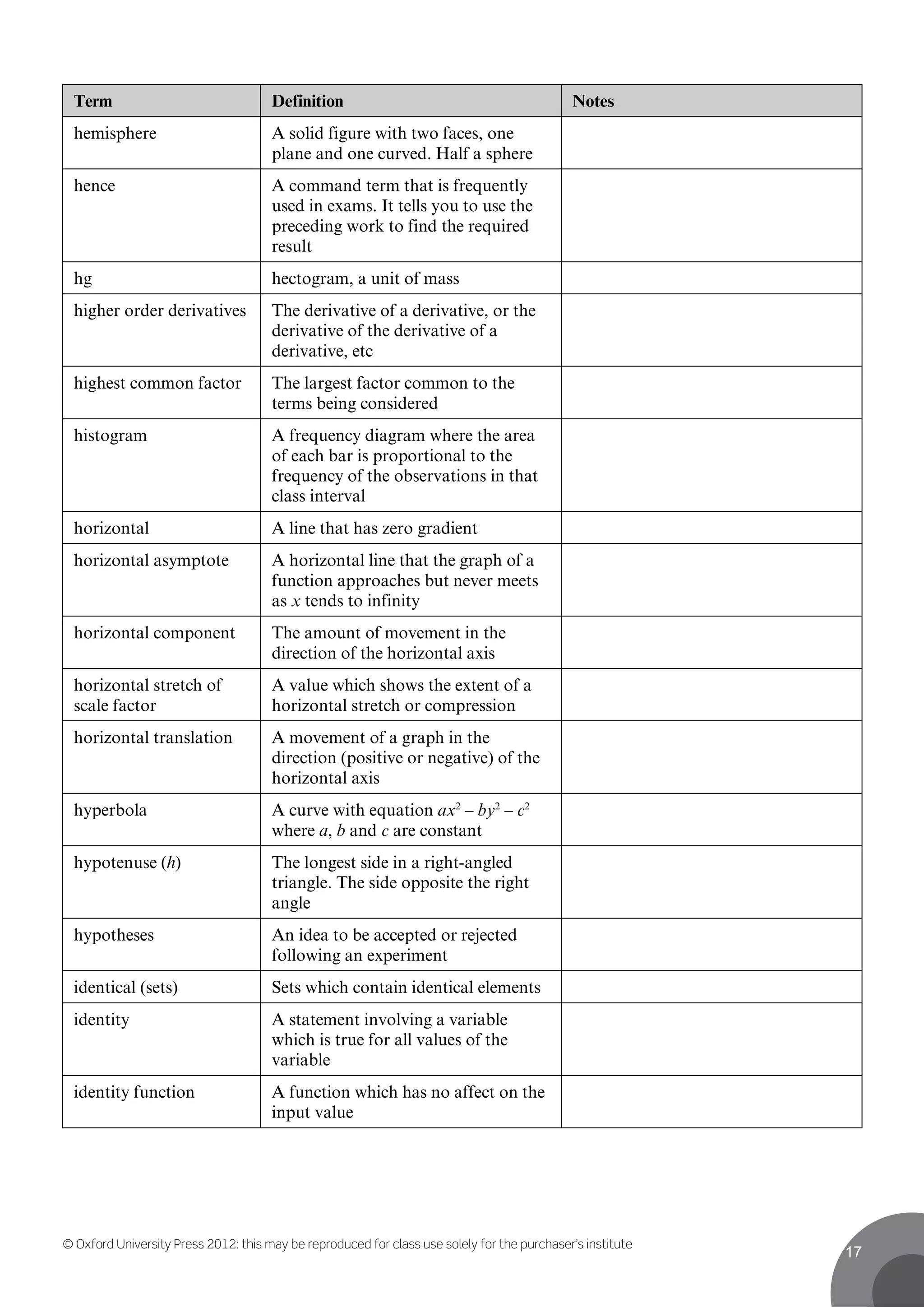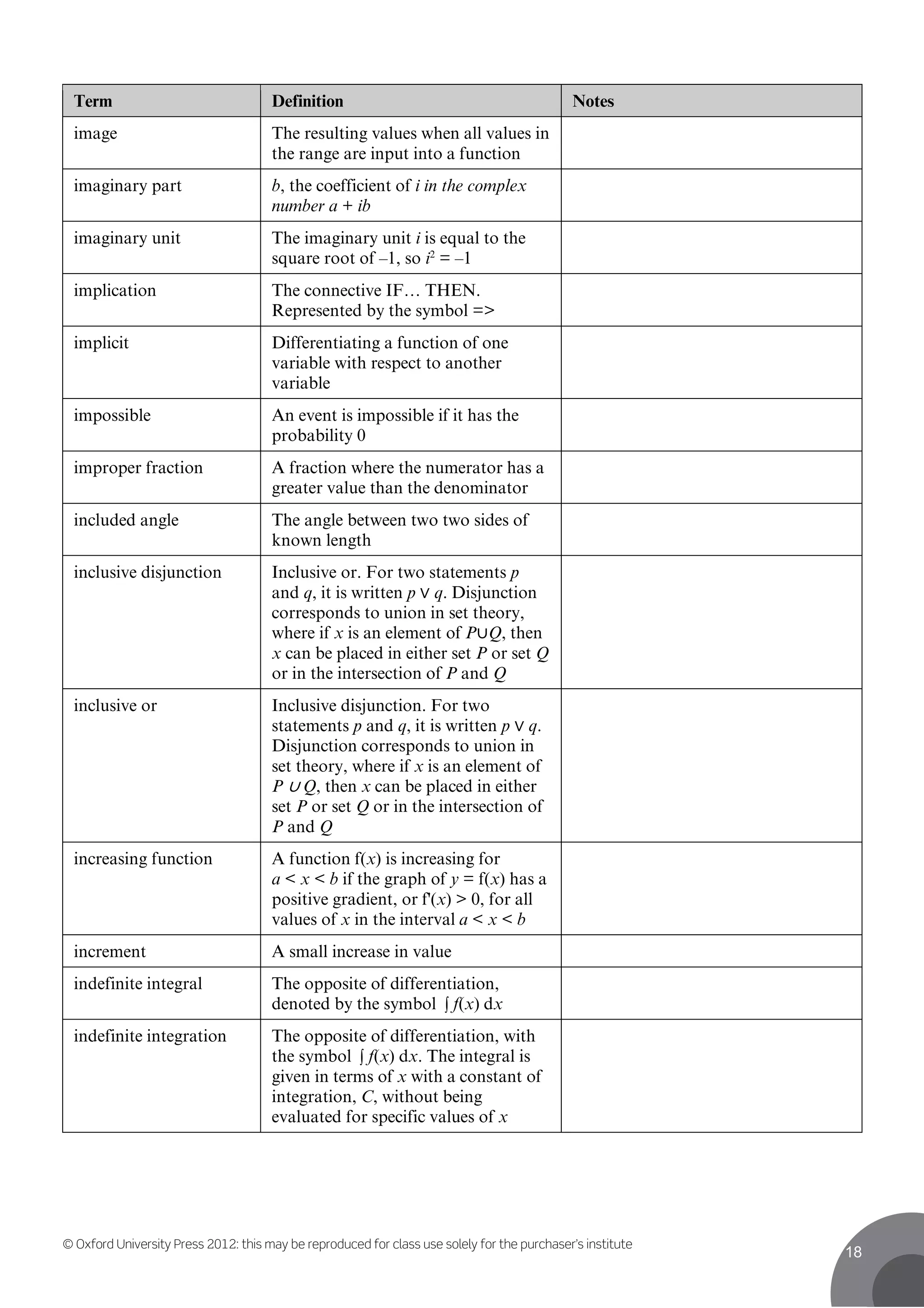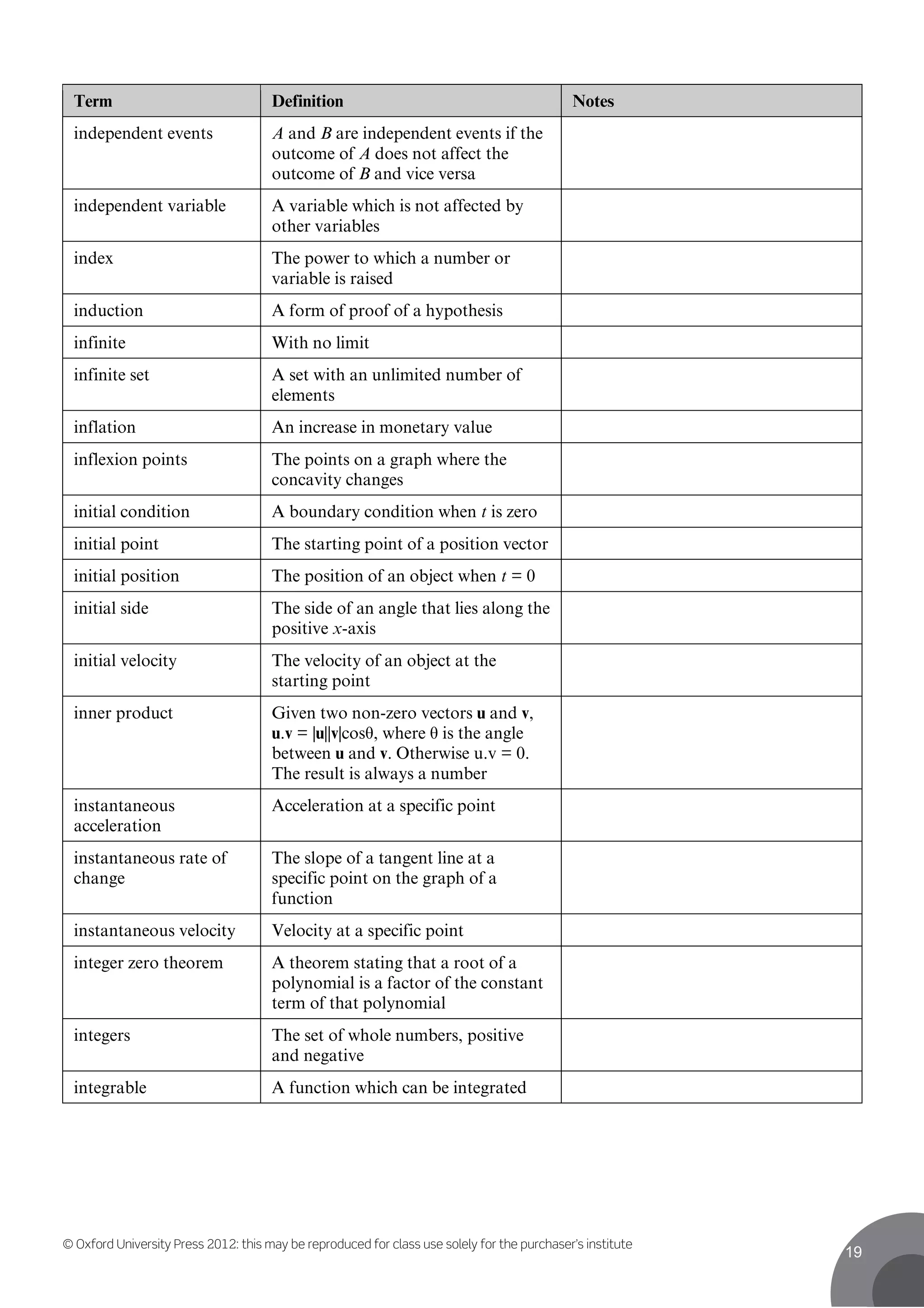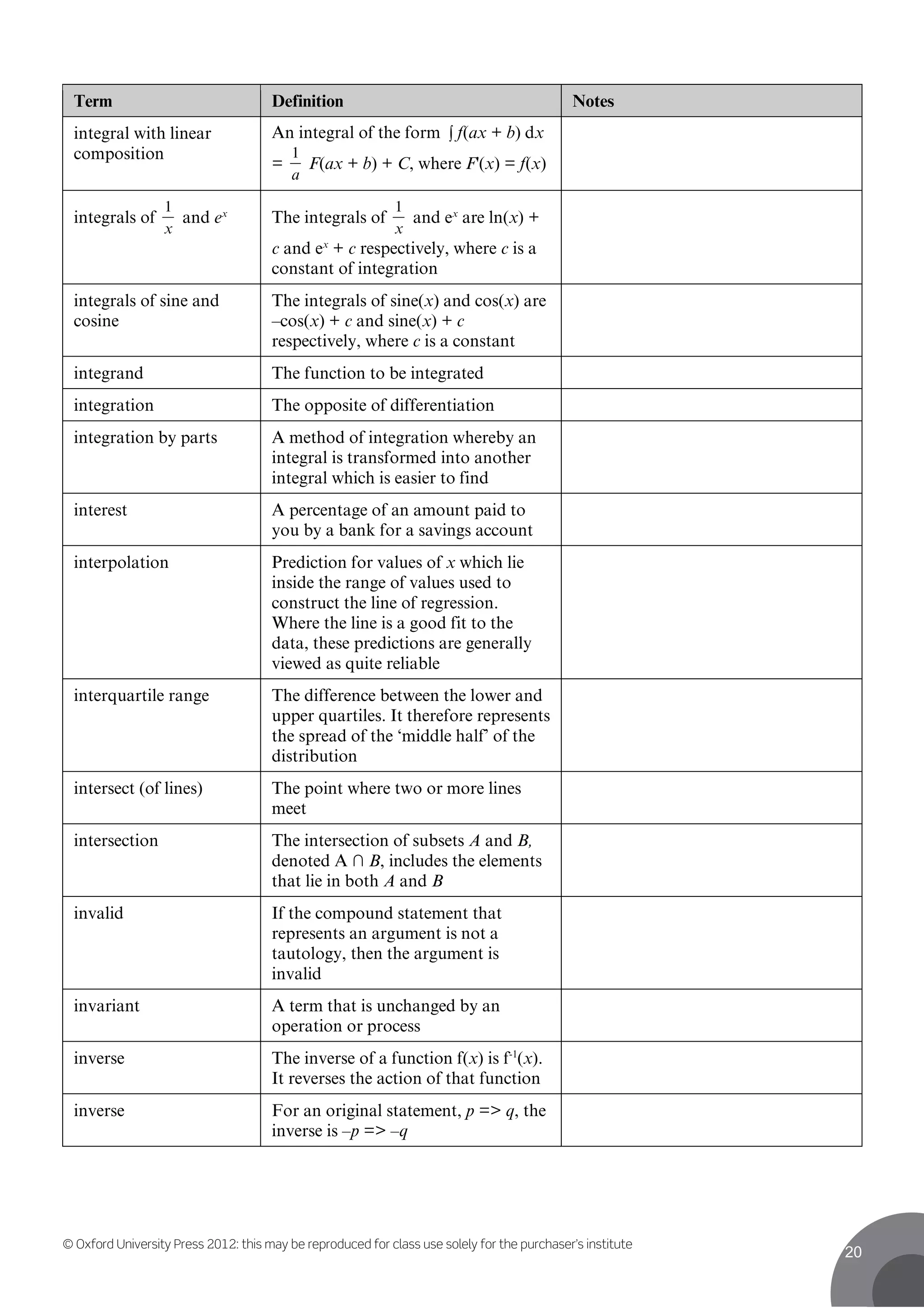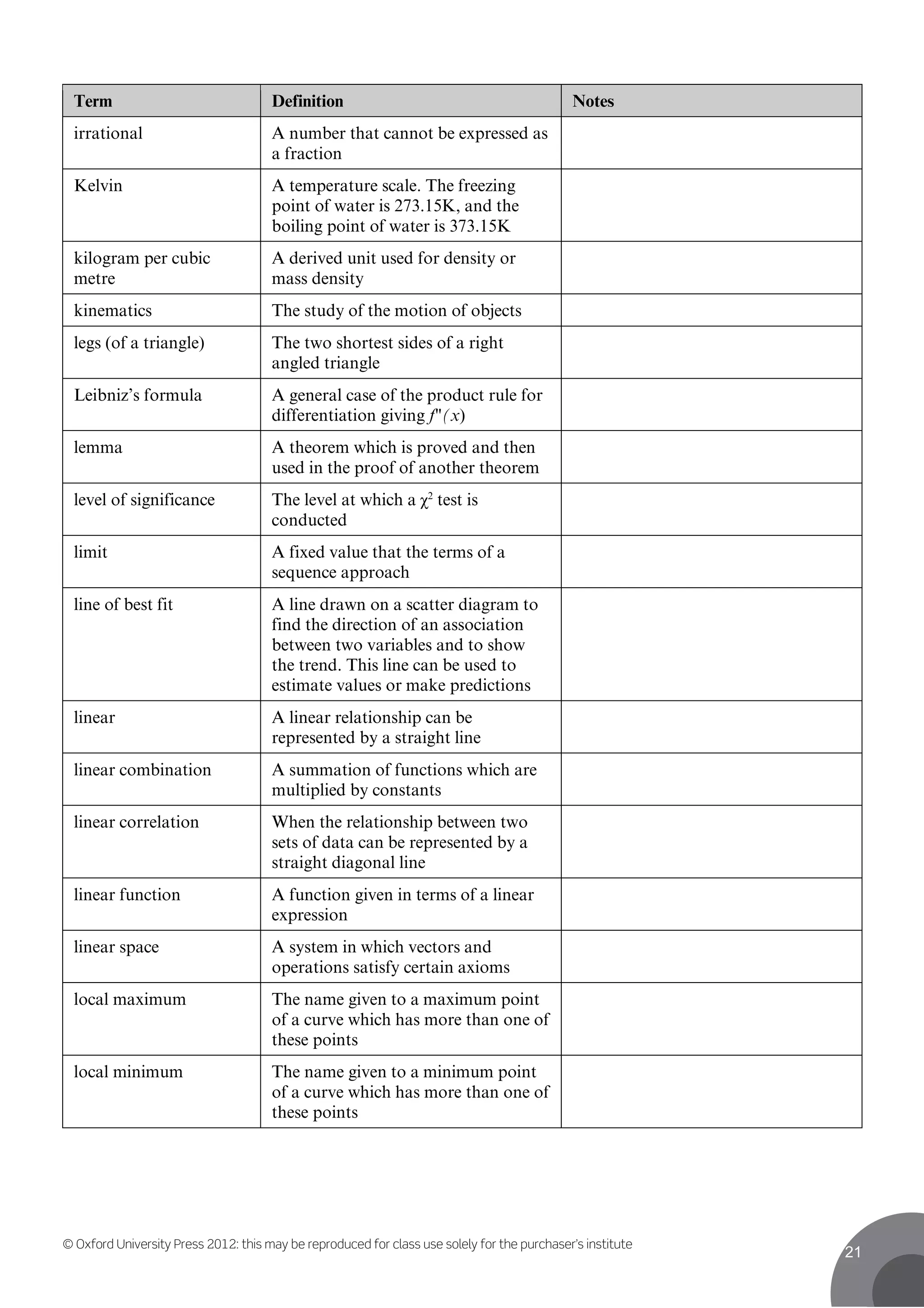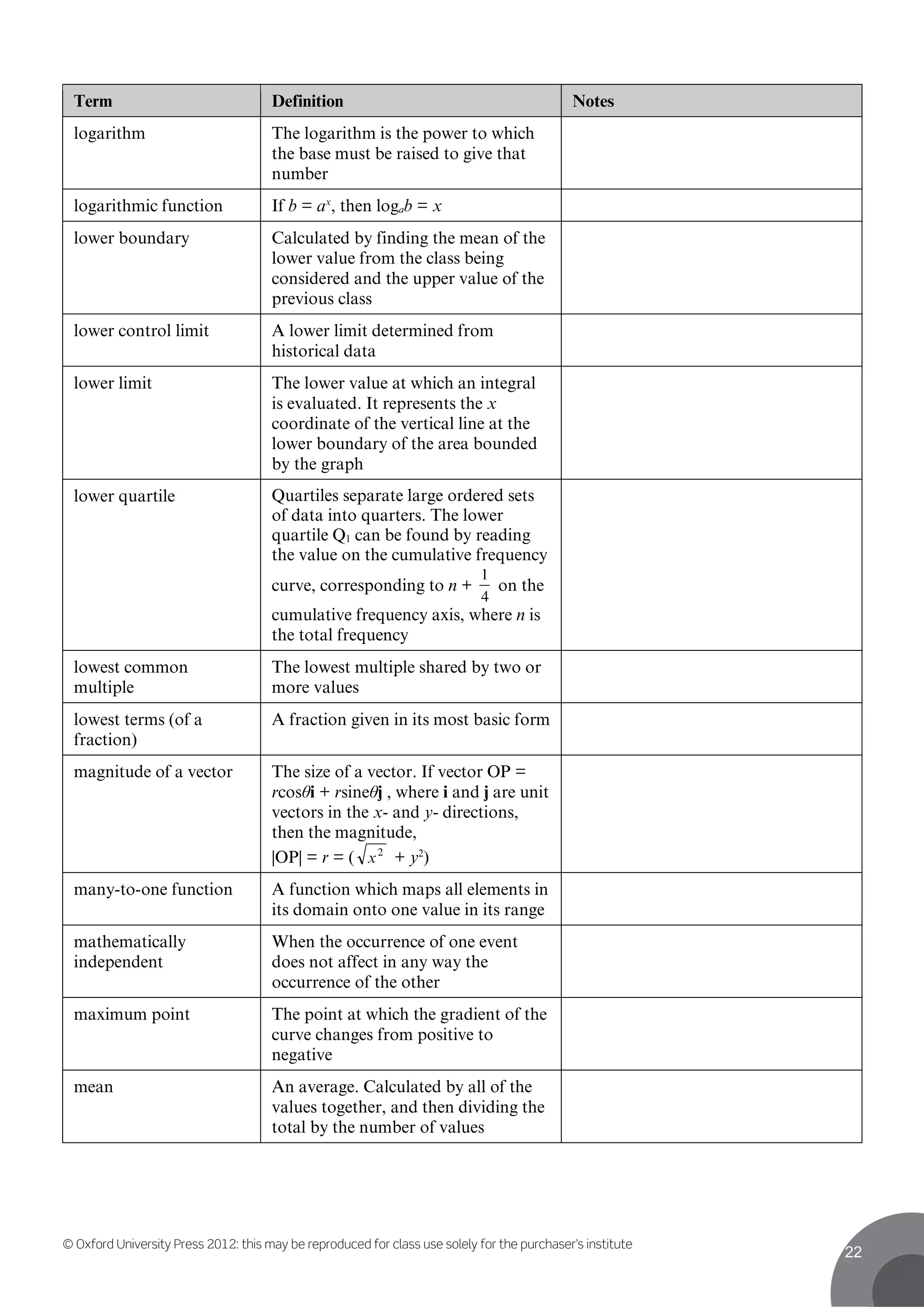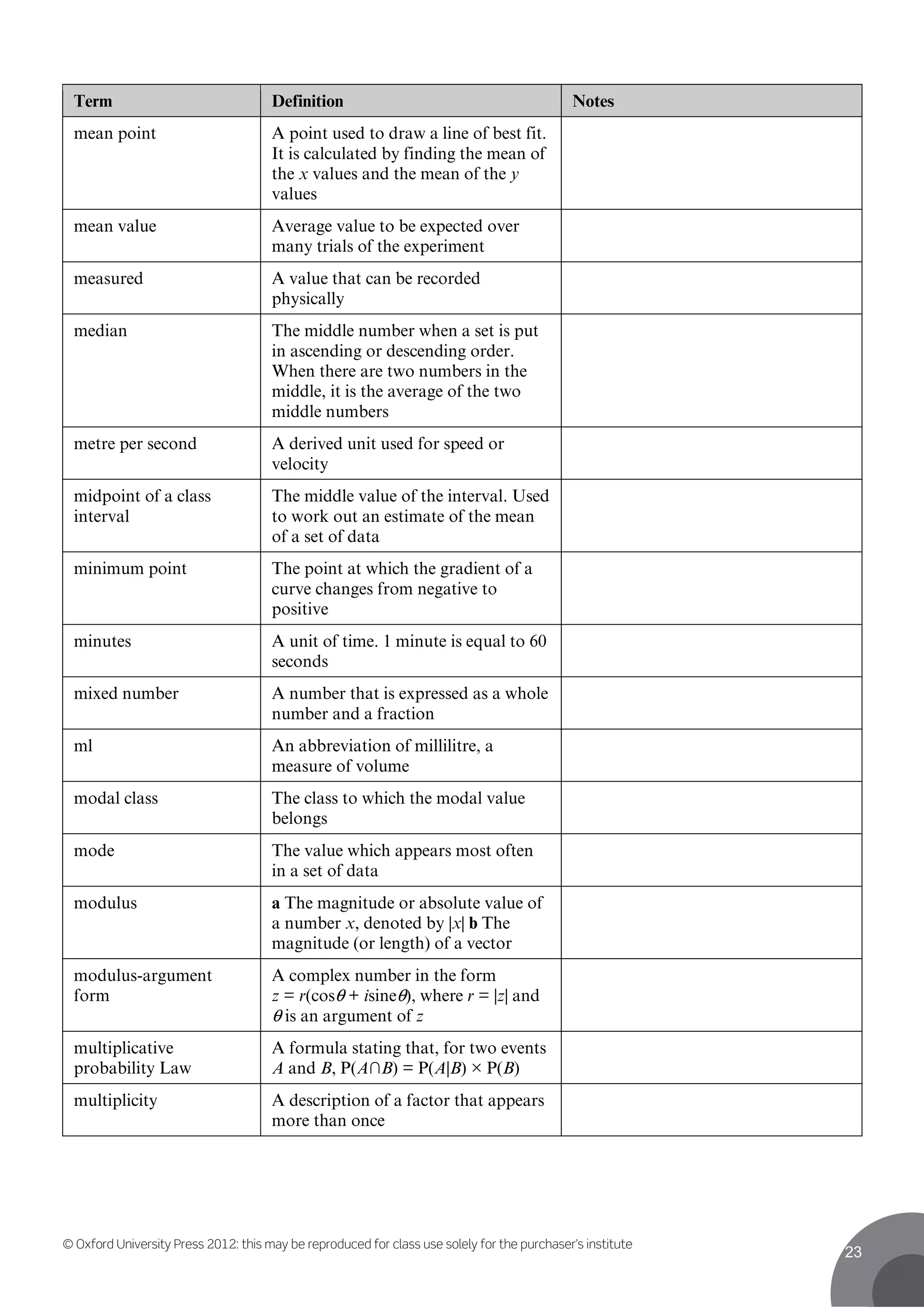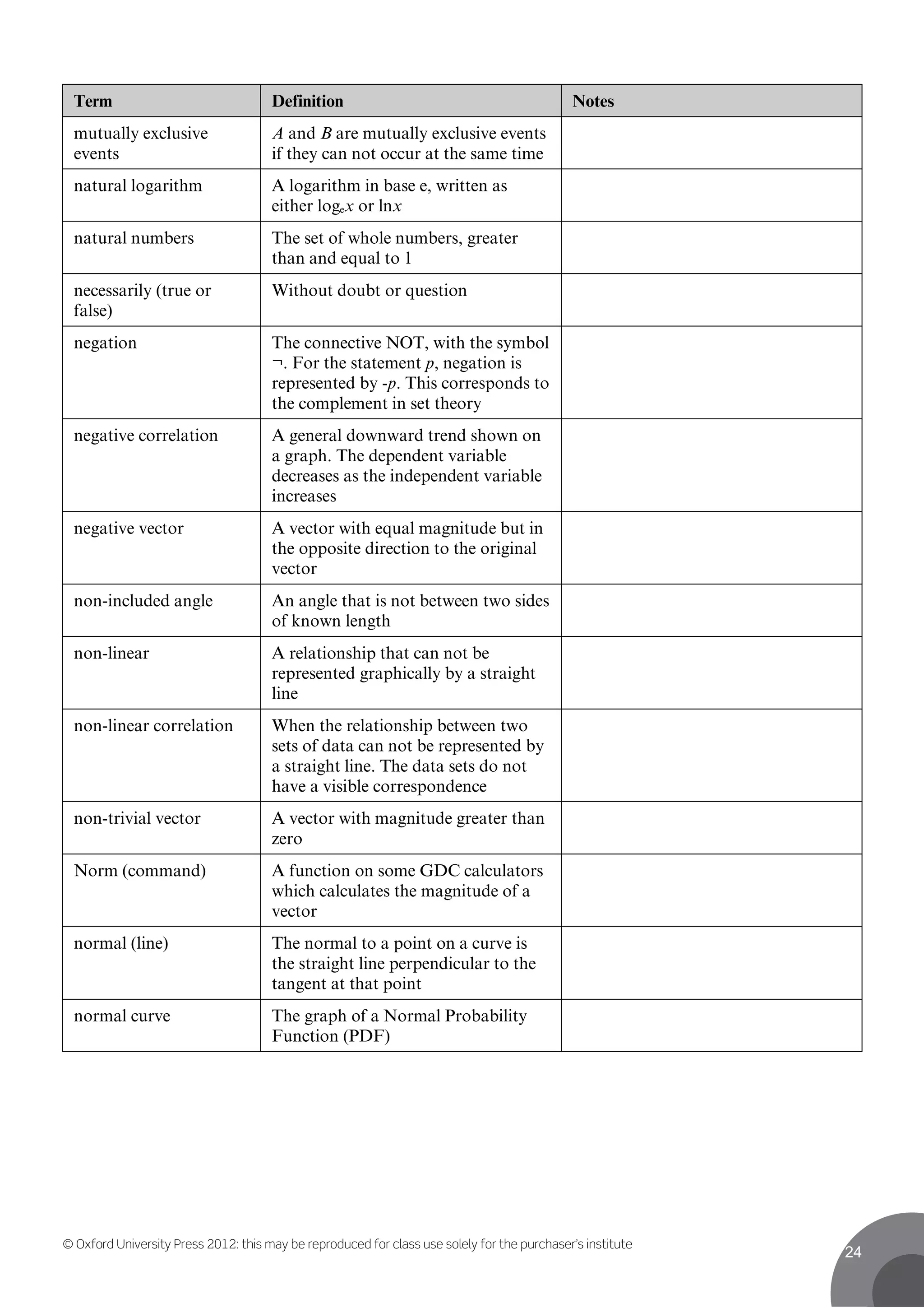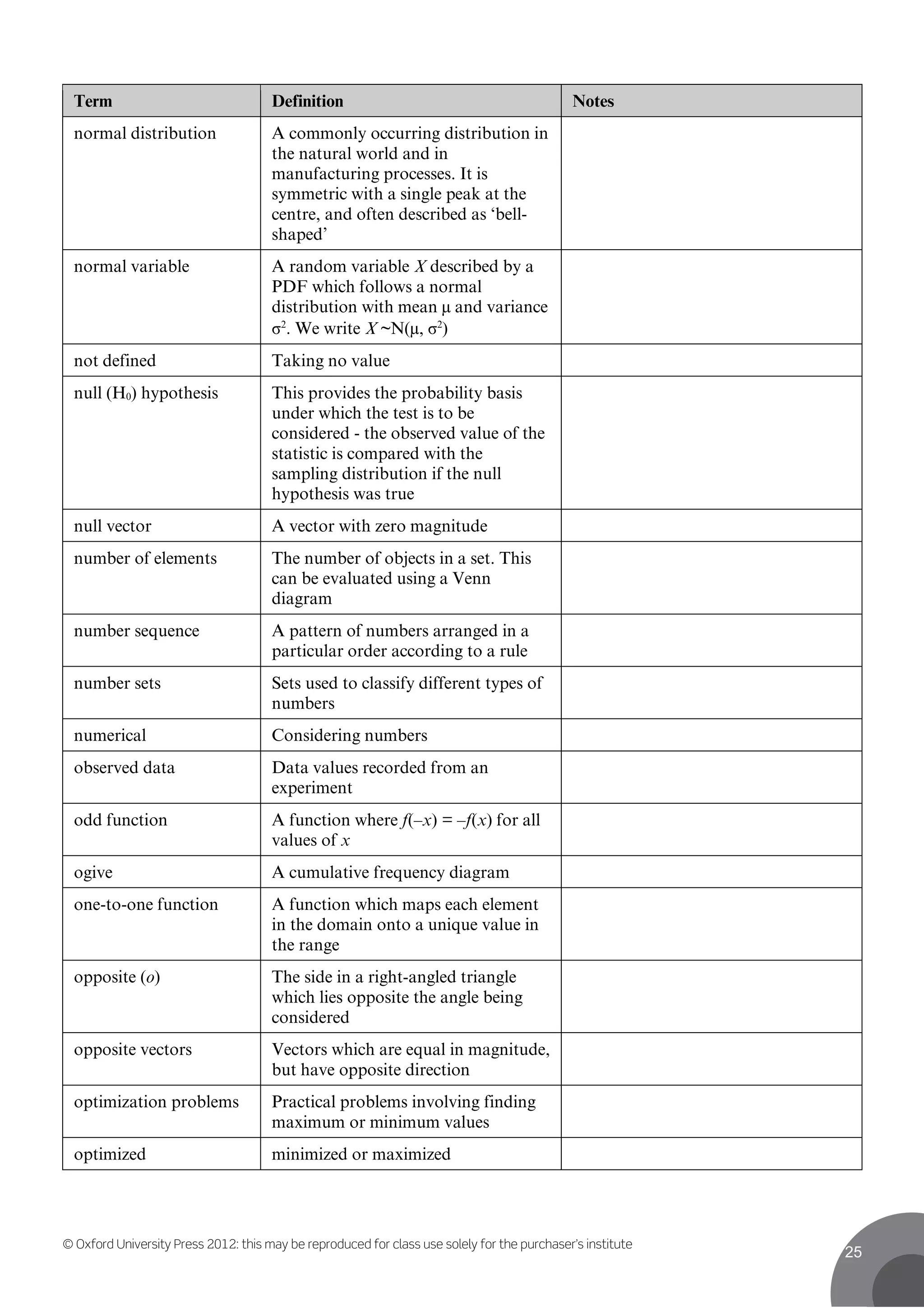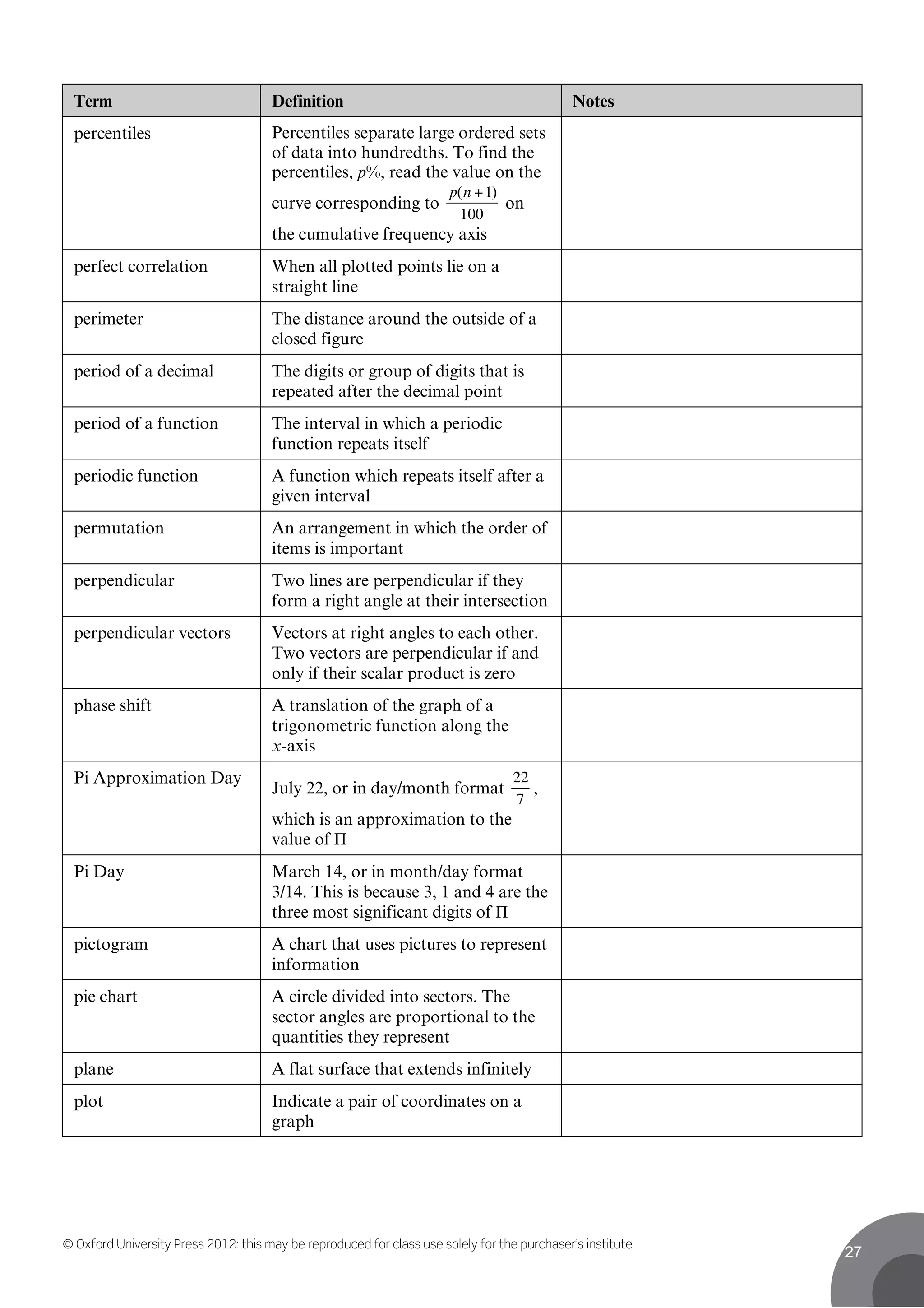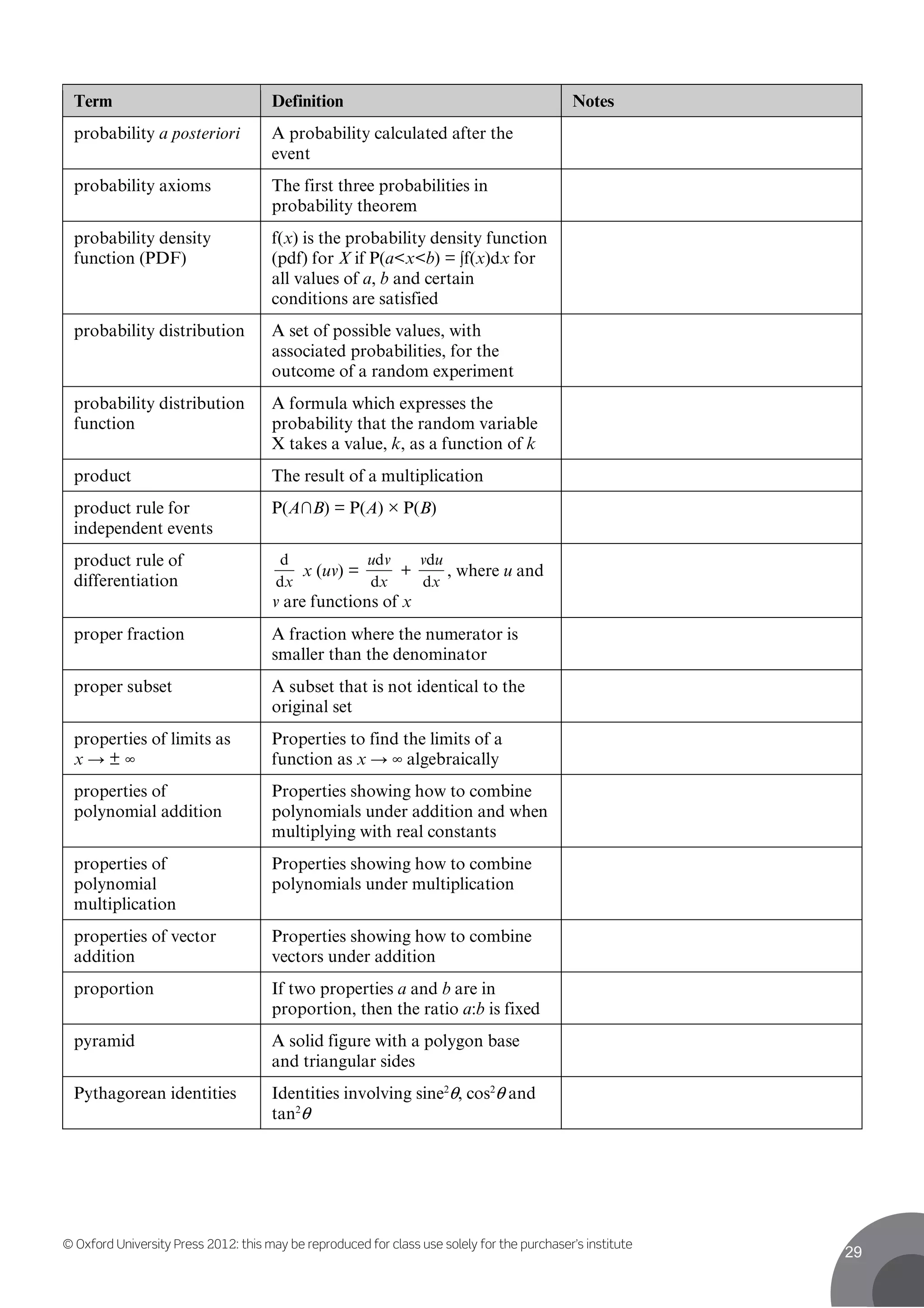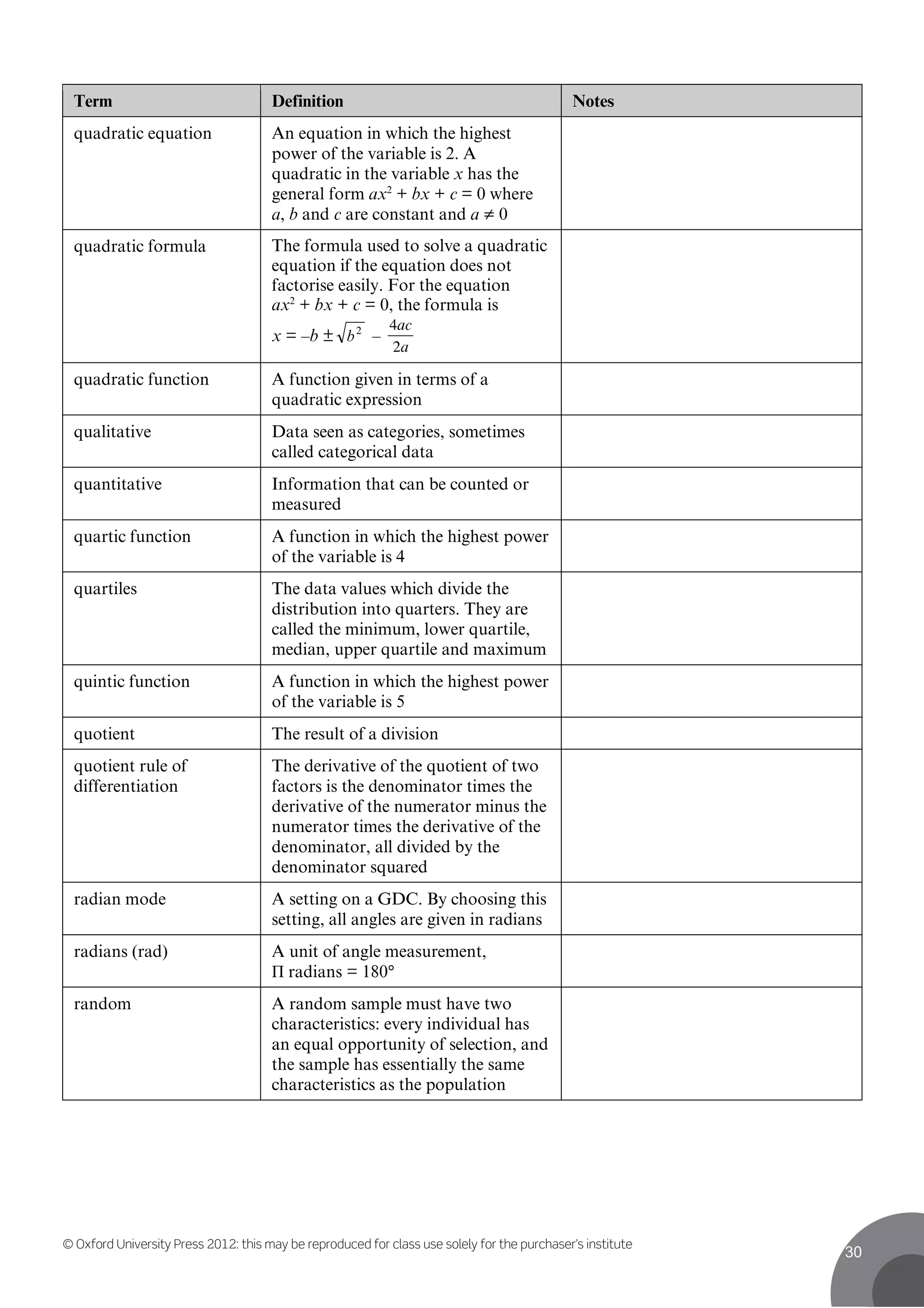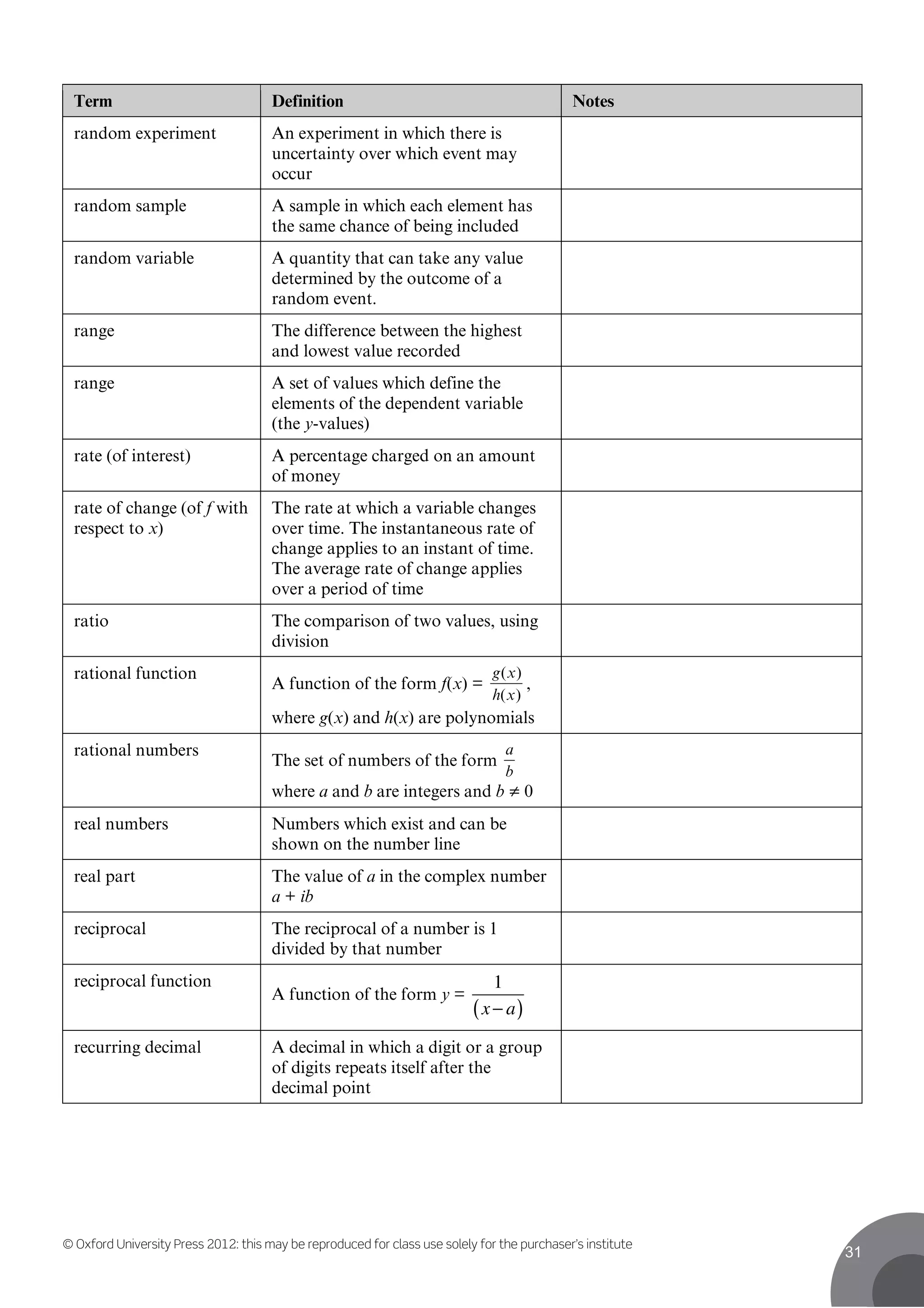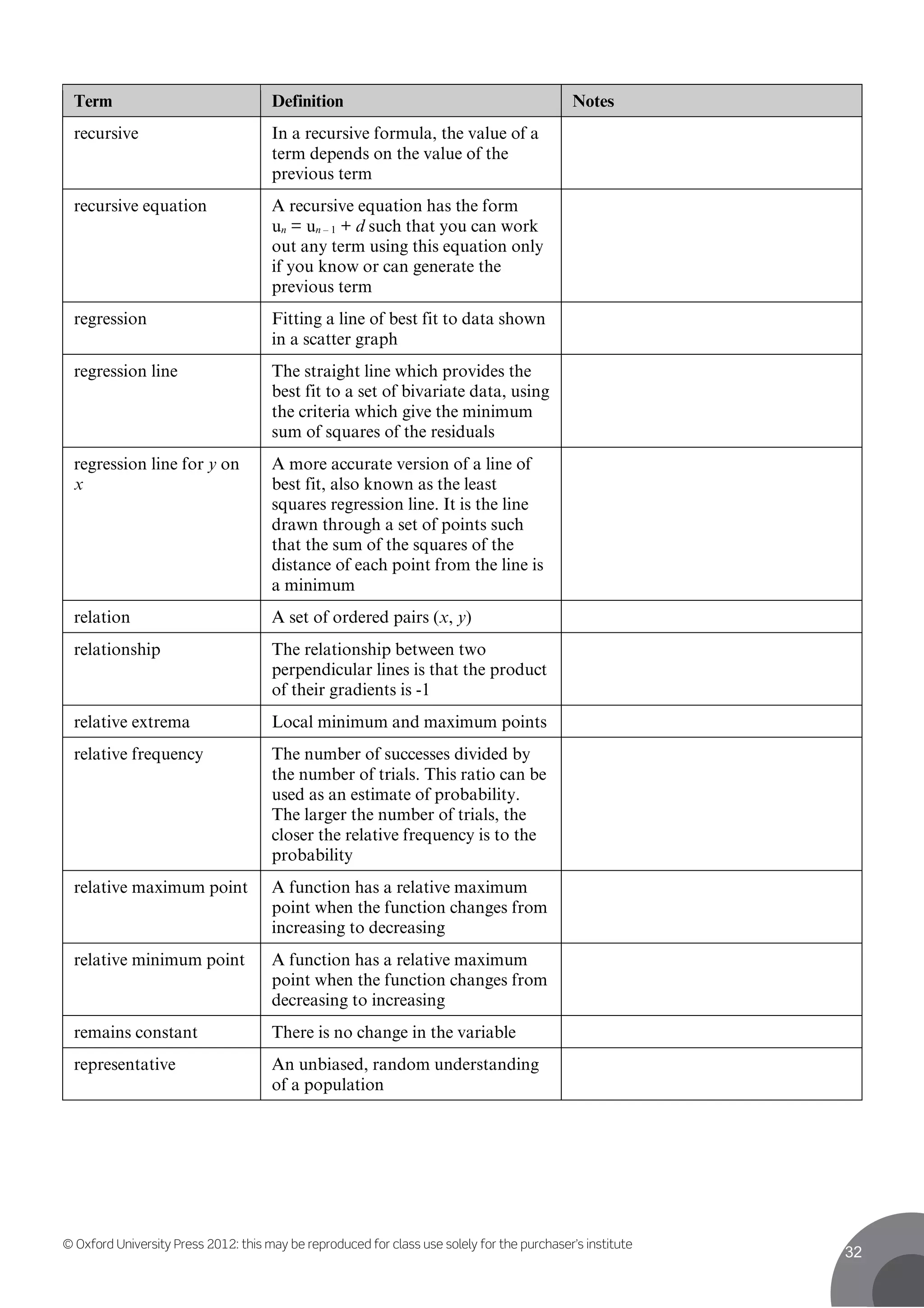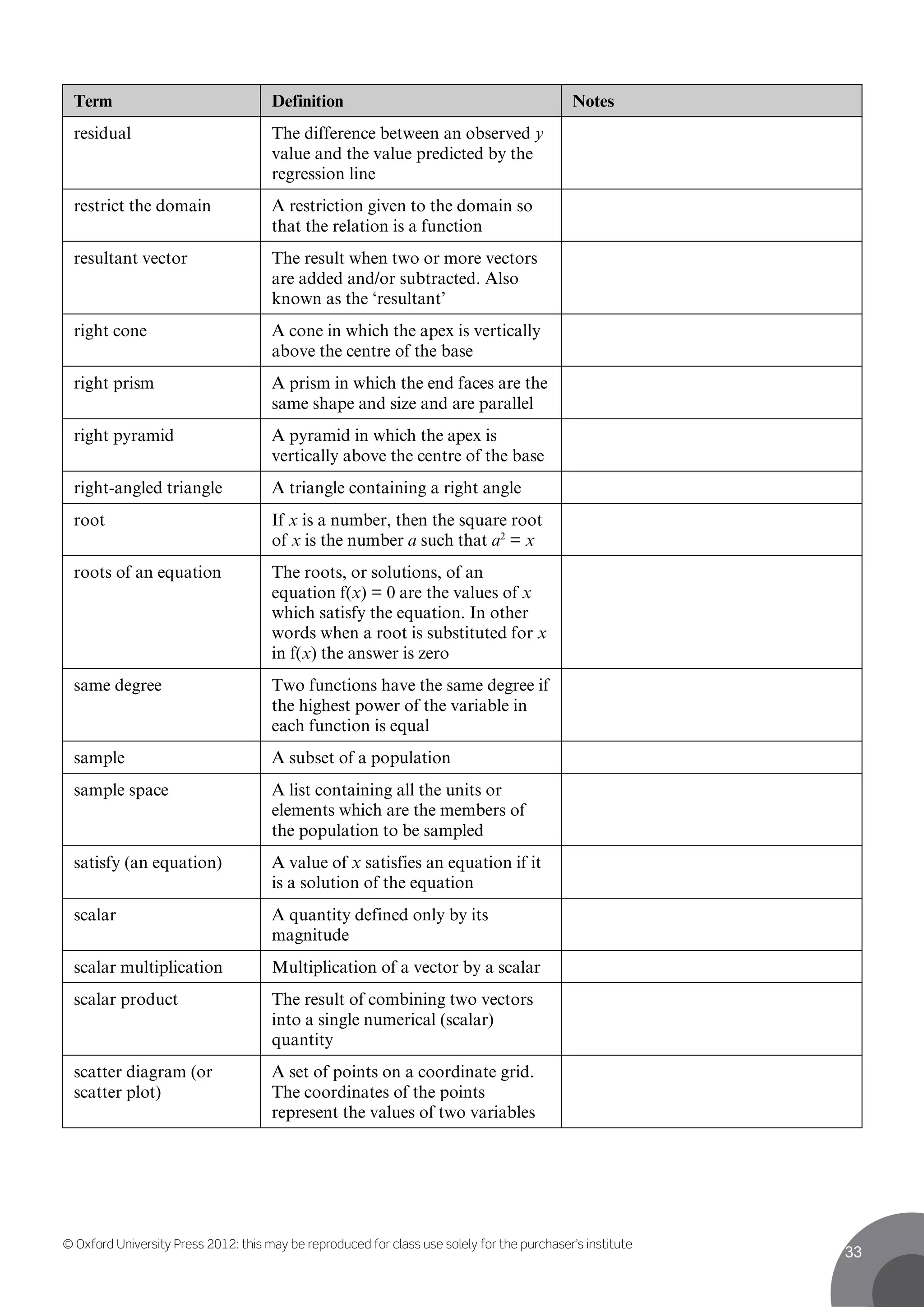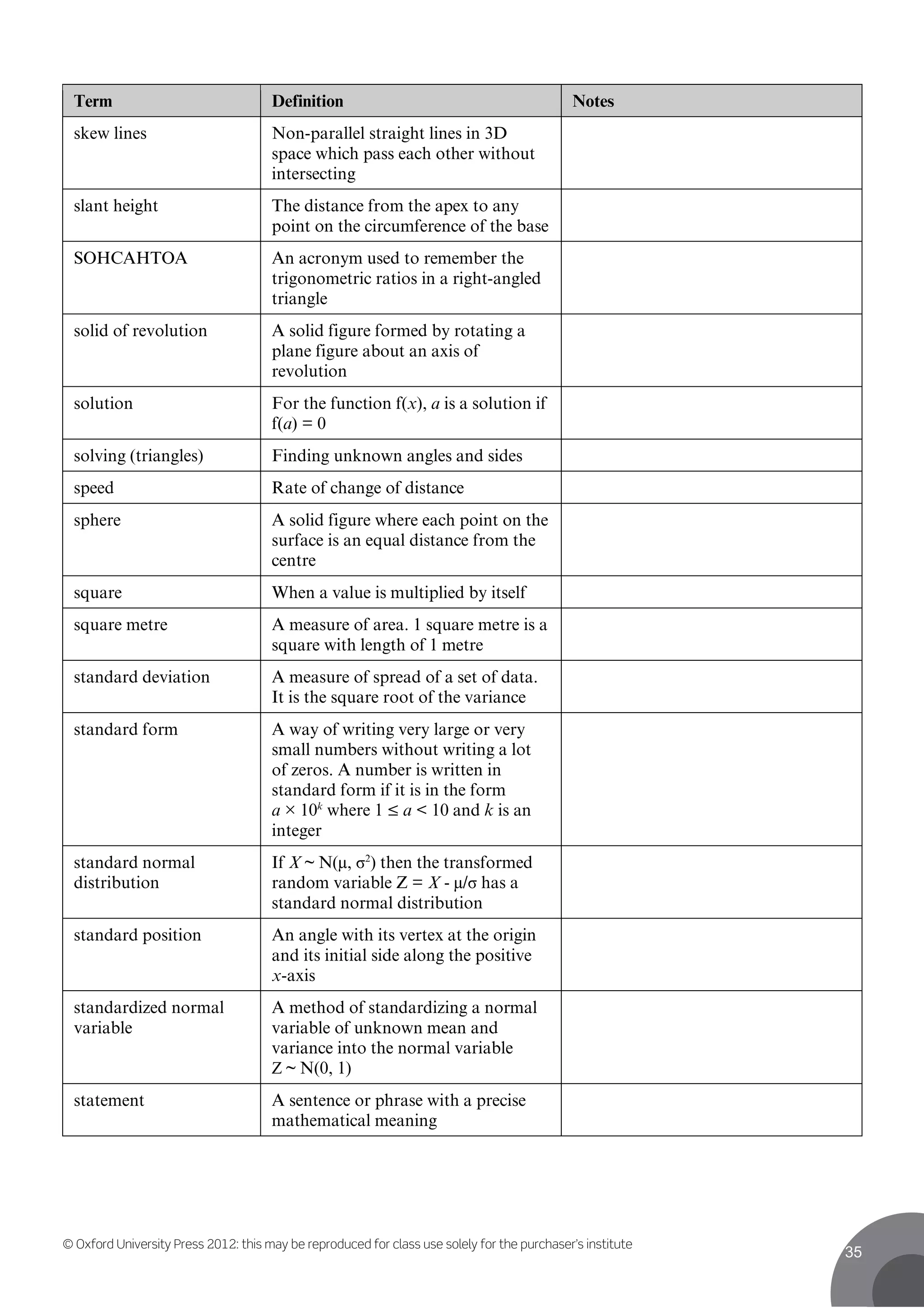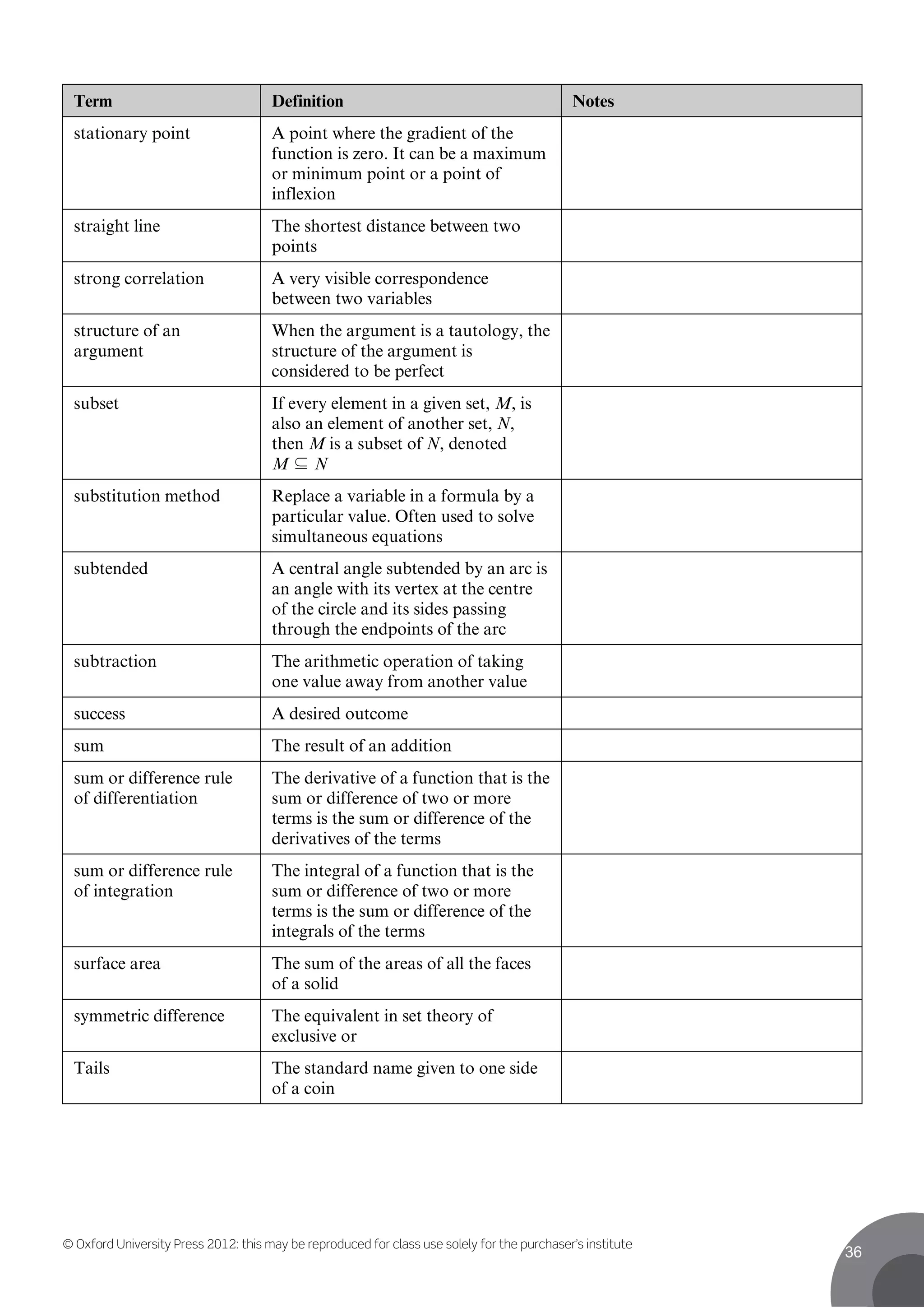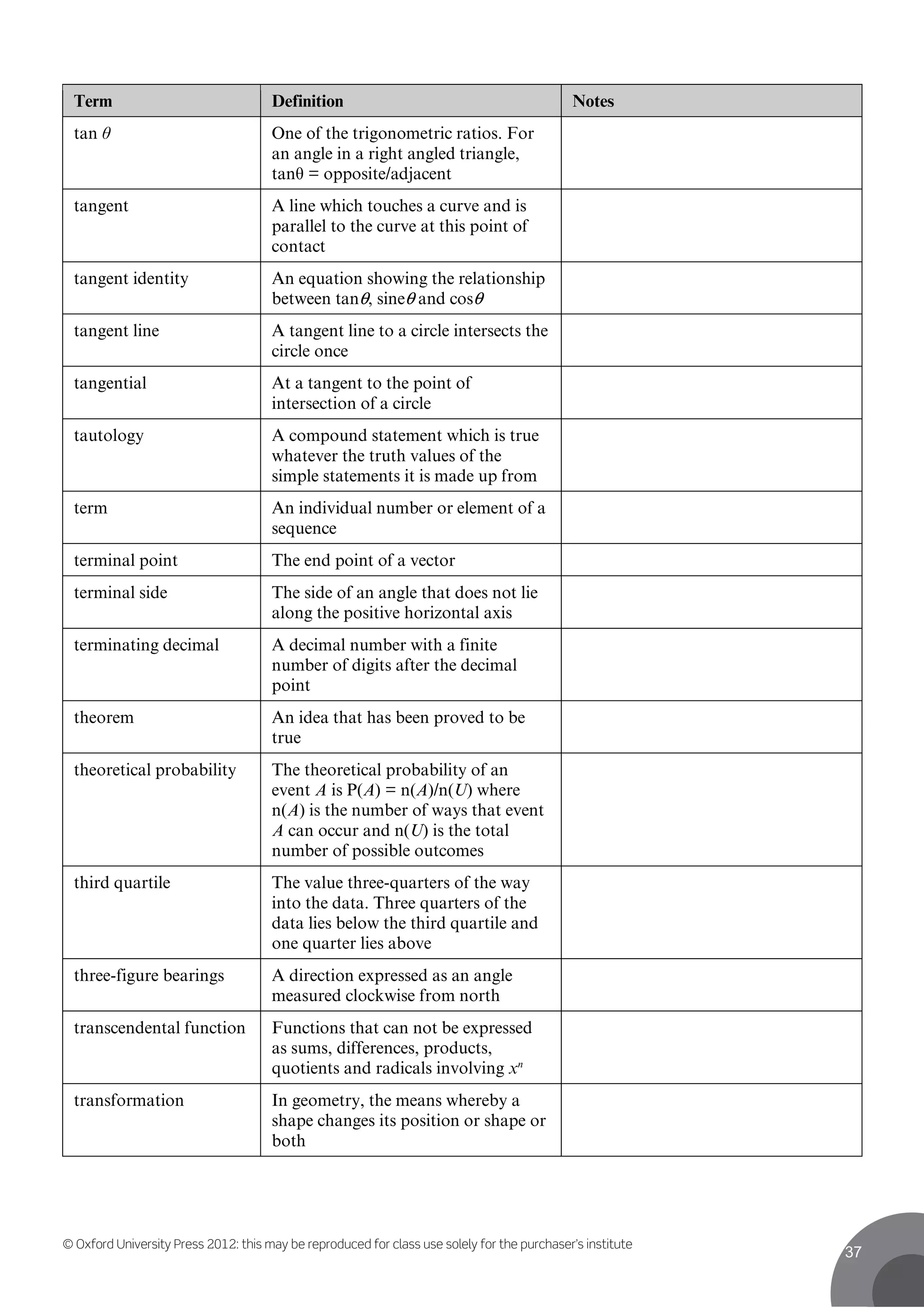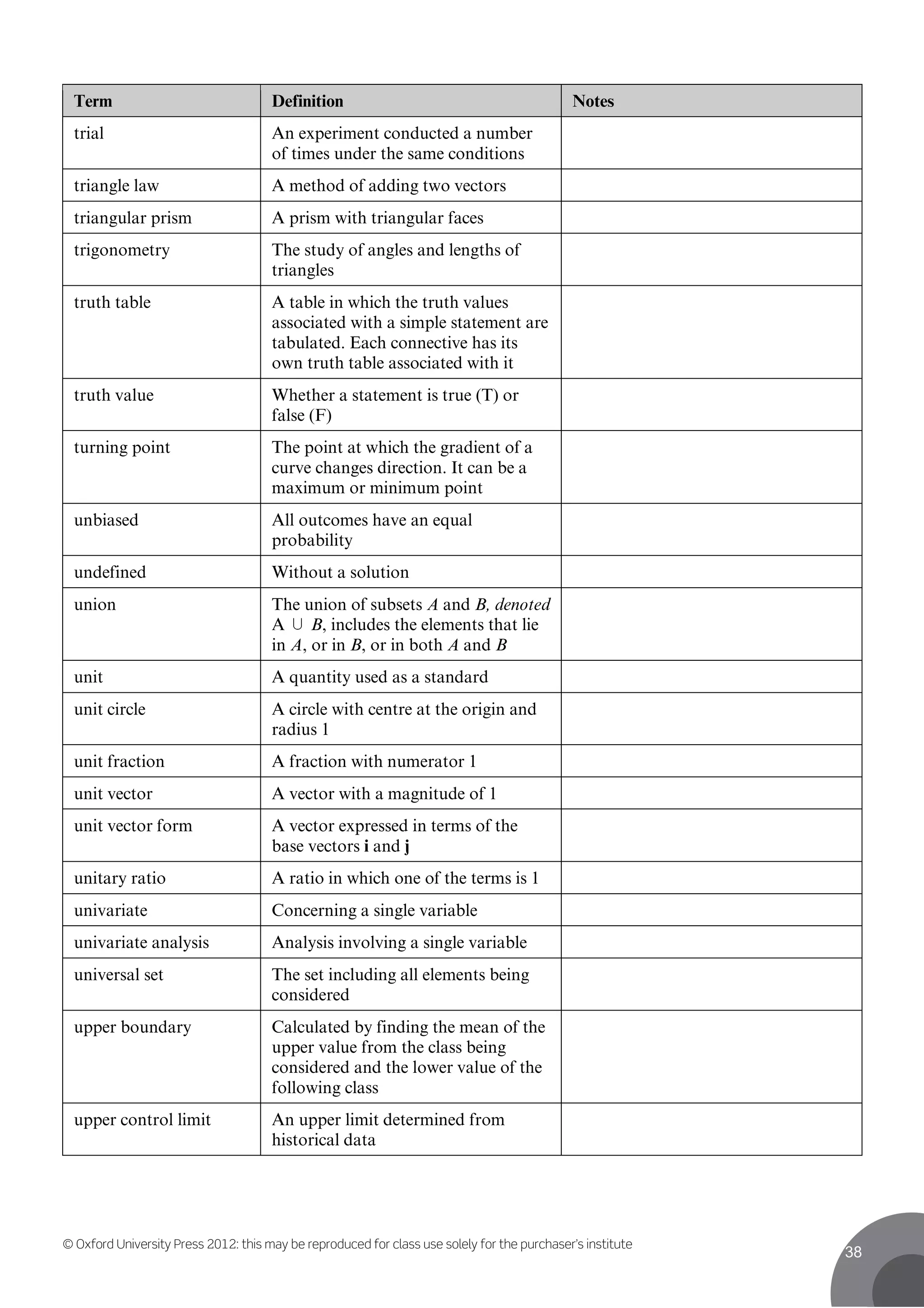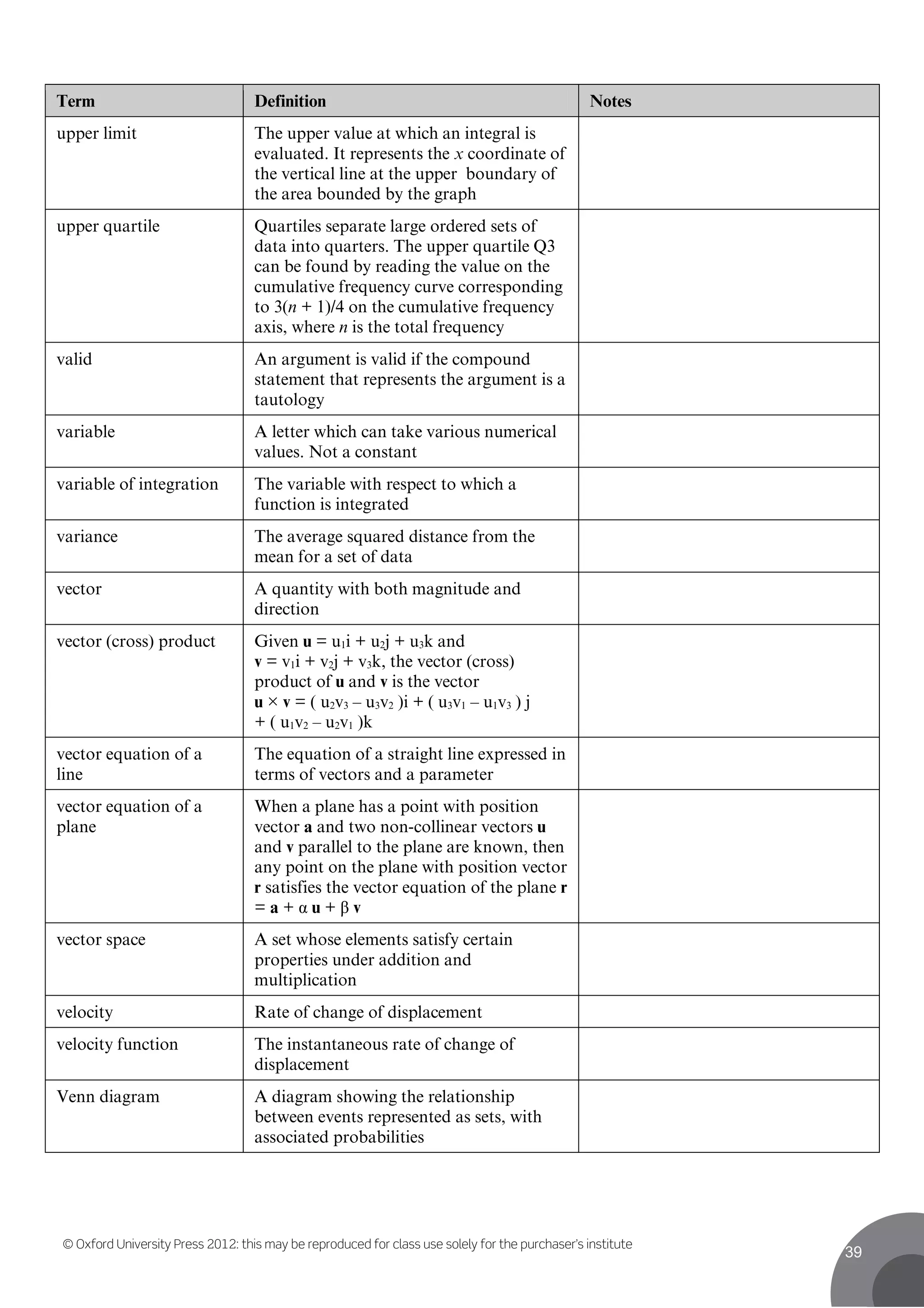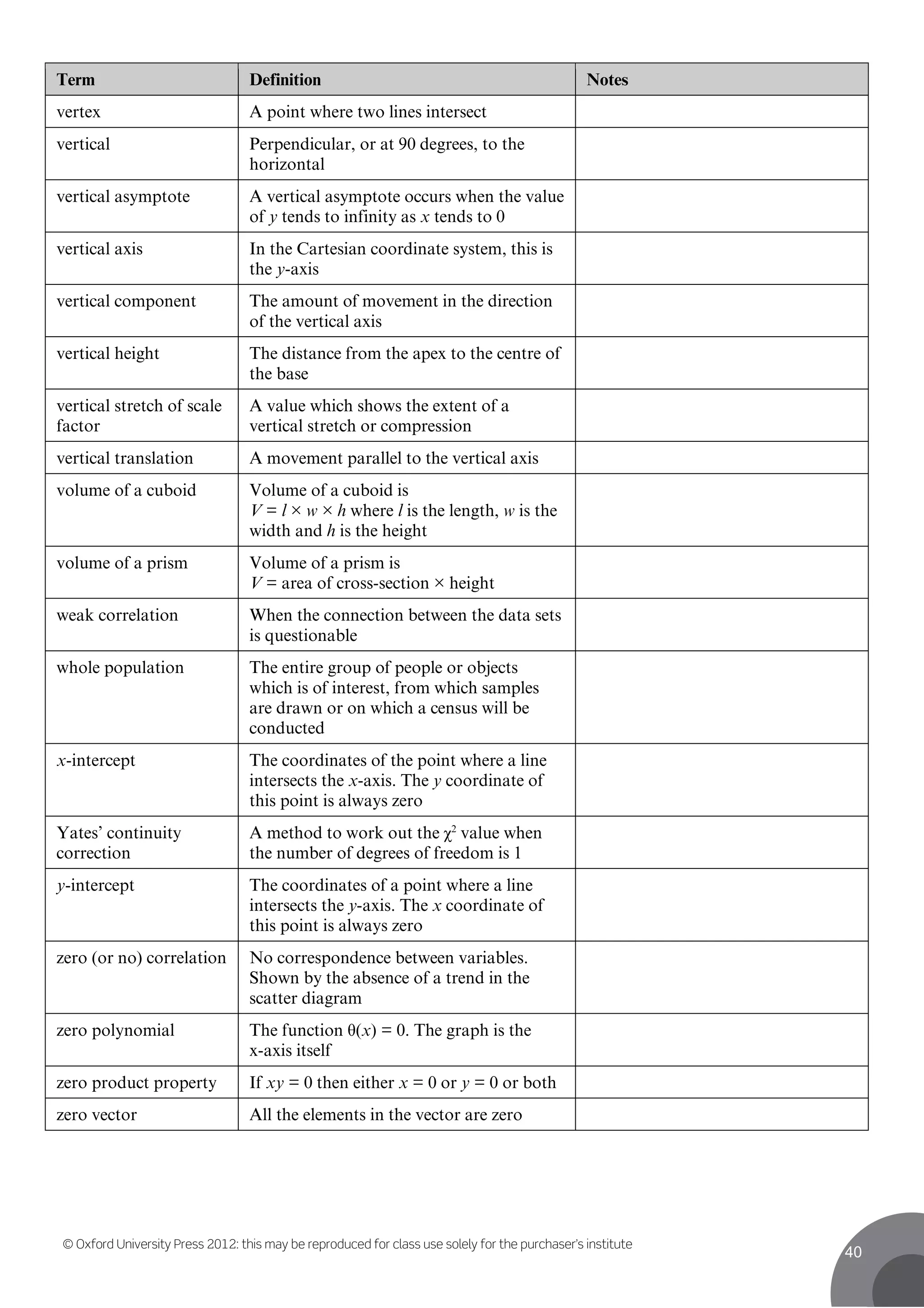This document contains definitions for mathematical and statistical terms from A to D. Some key terms defined include:
- Degree: A unit of angle measurement where 1 degree is equal to 360/1 of a circle.
- Derivative: The result of differentiating a function, denoted by f'(x) or dy/dx.
- Dependent variable: A variable that is affected by changes in another variable.
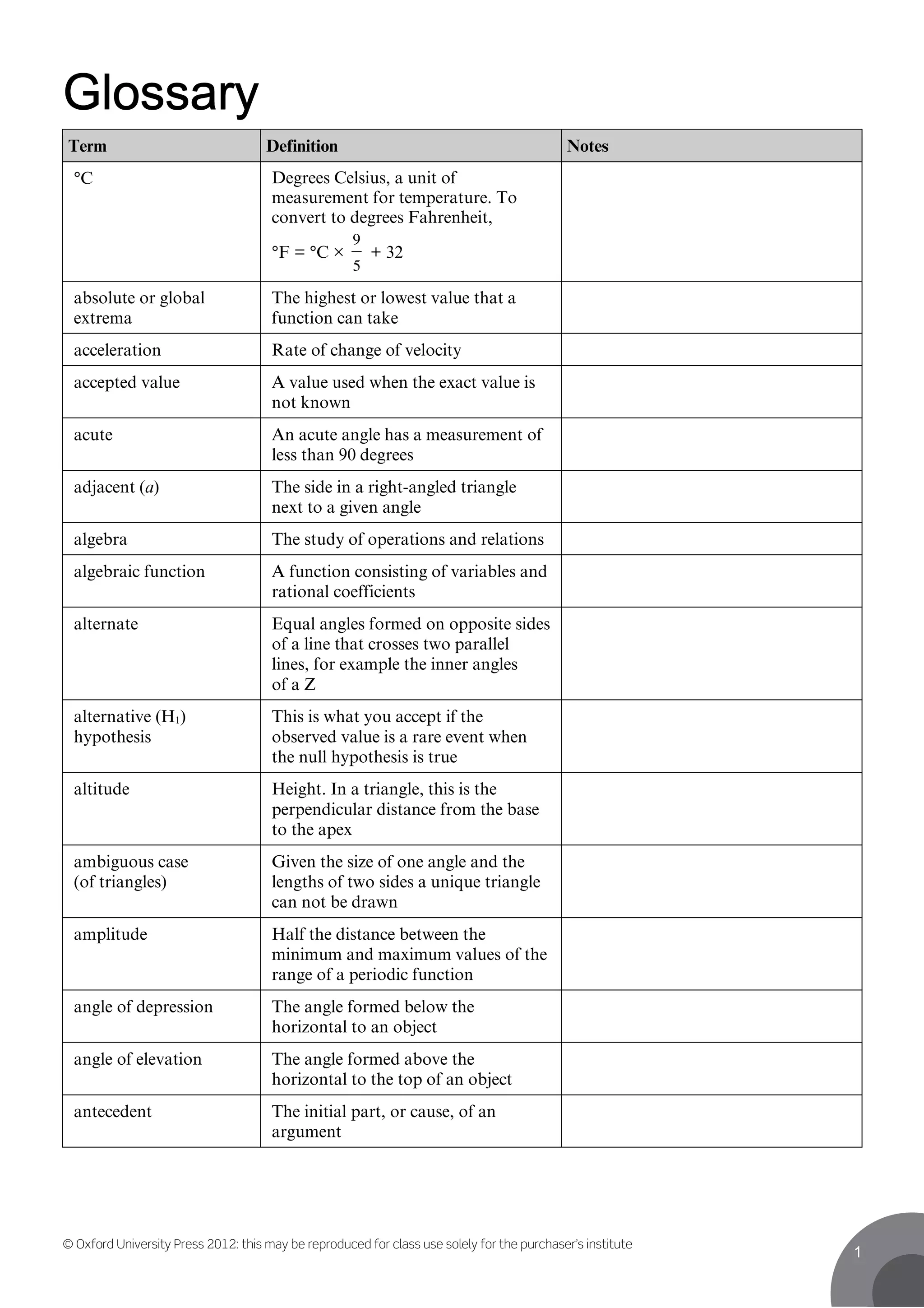
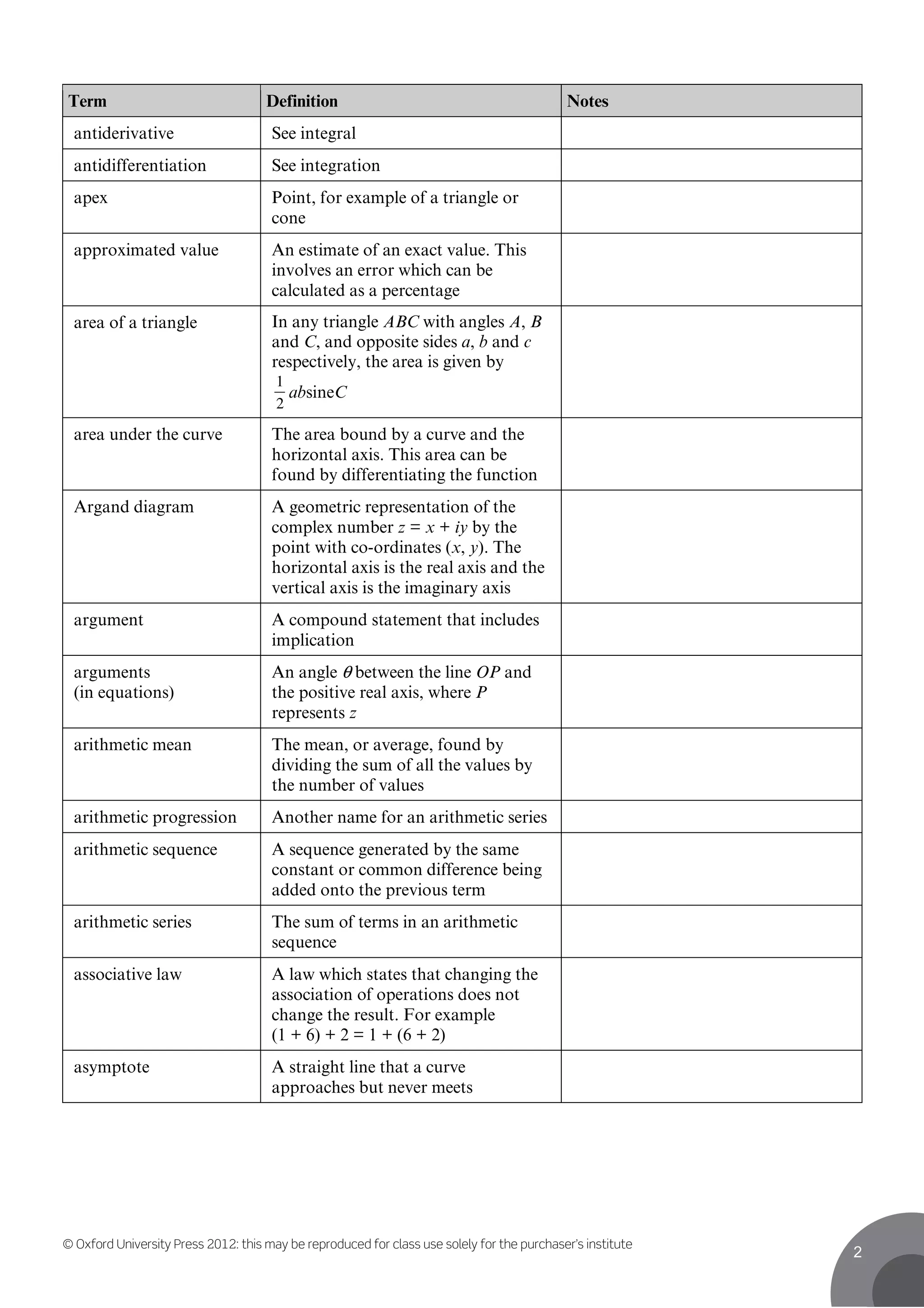
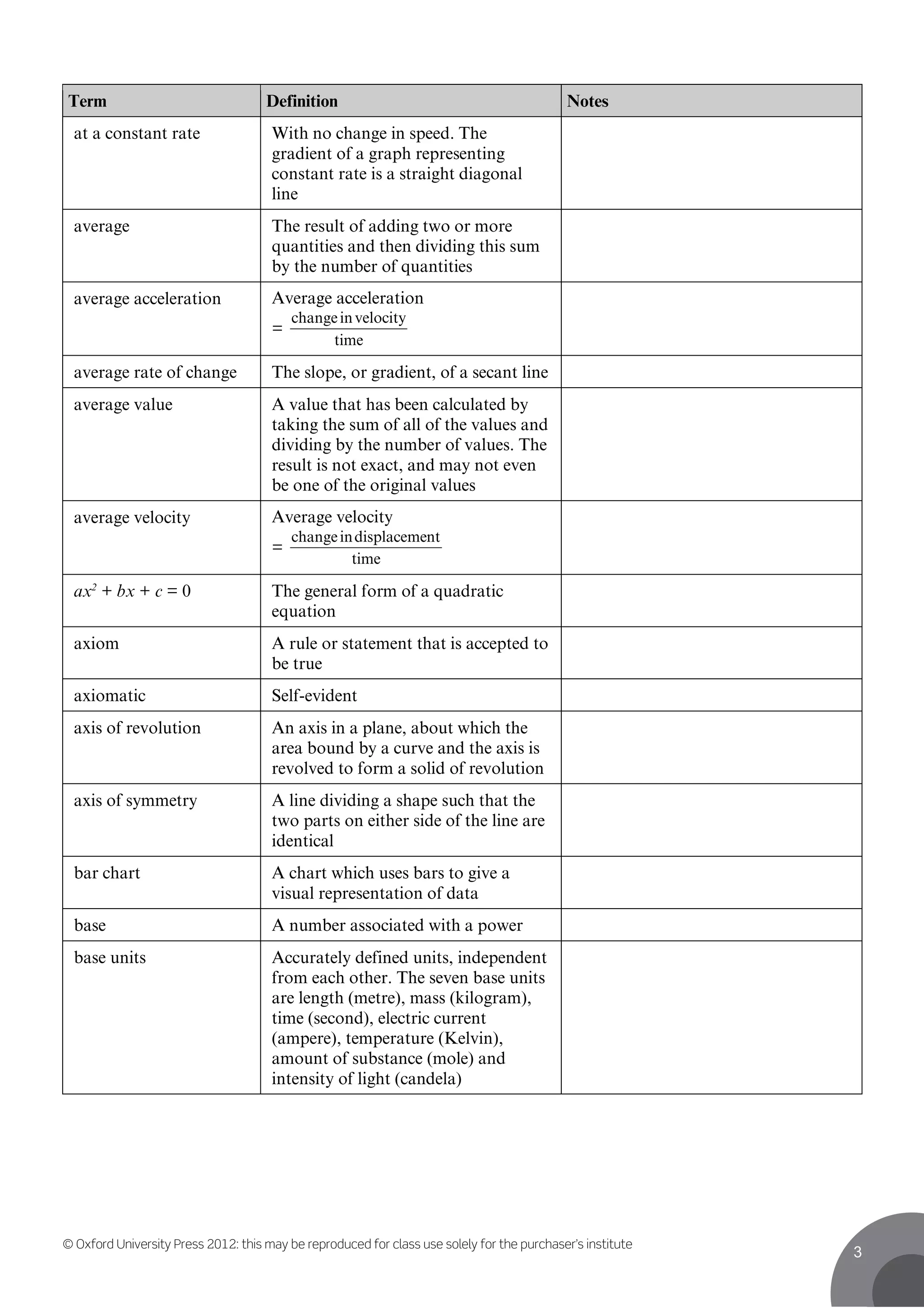
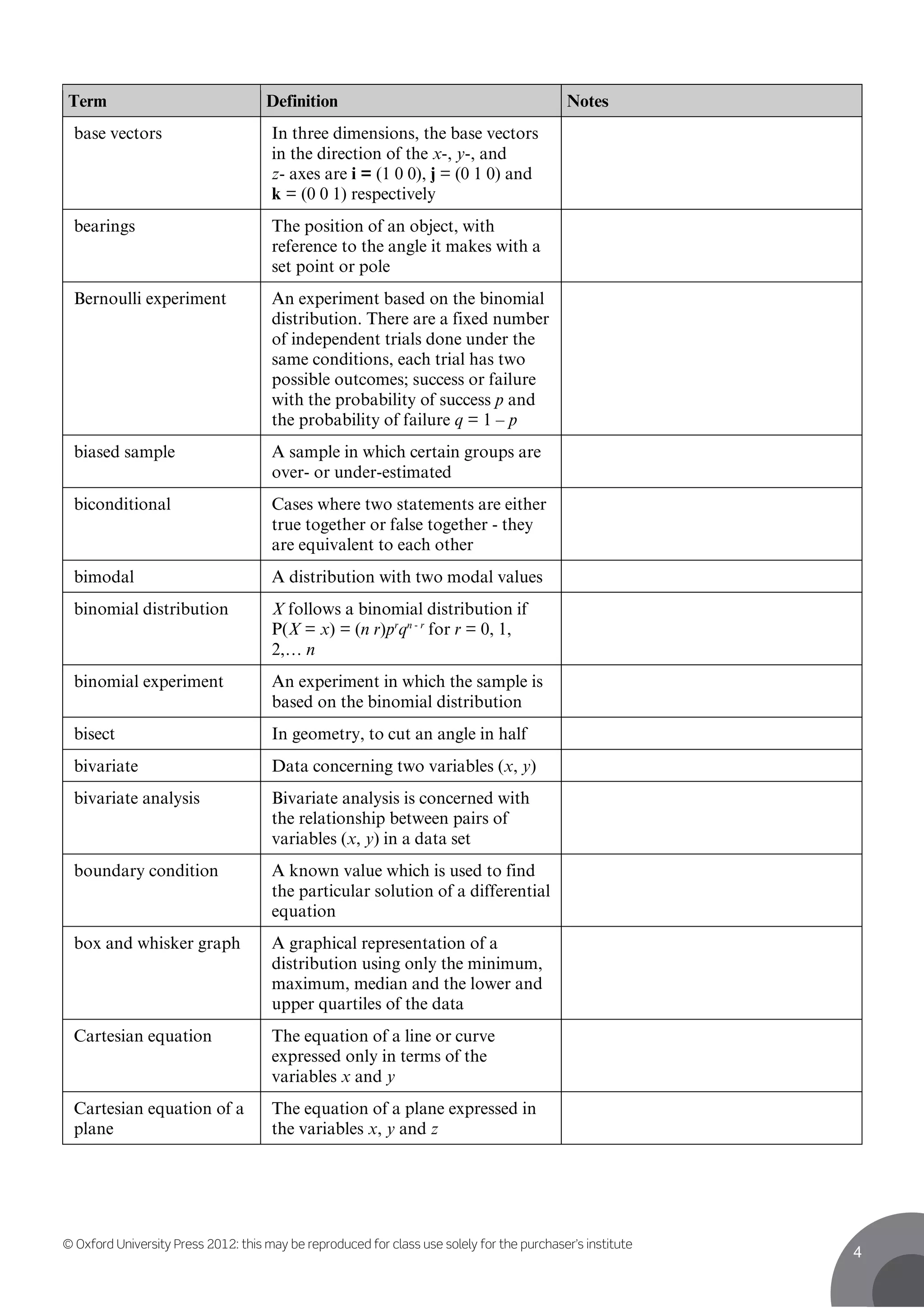
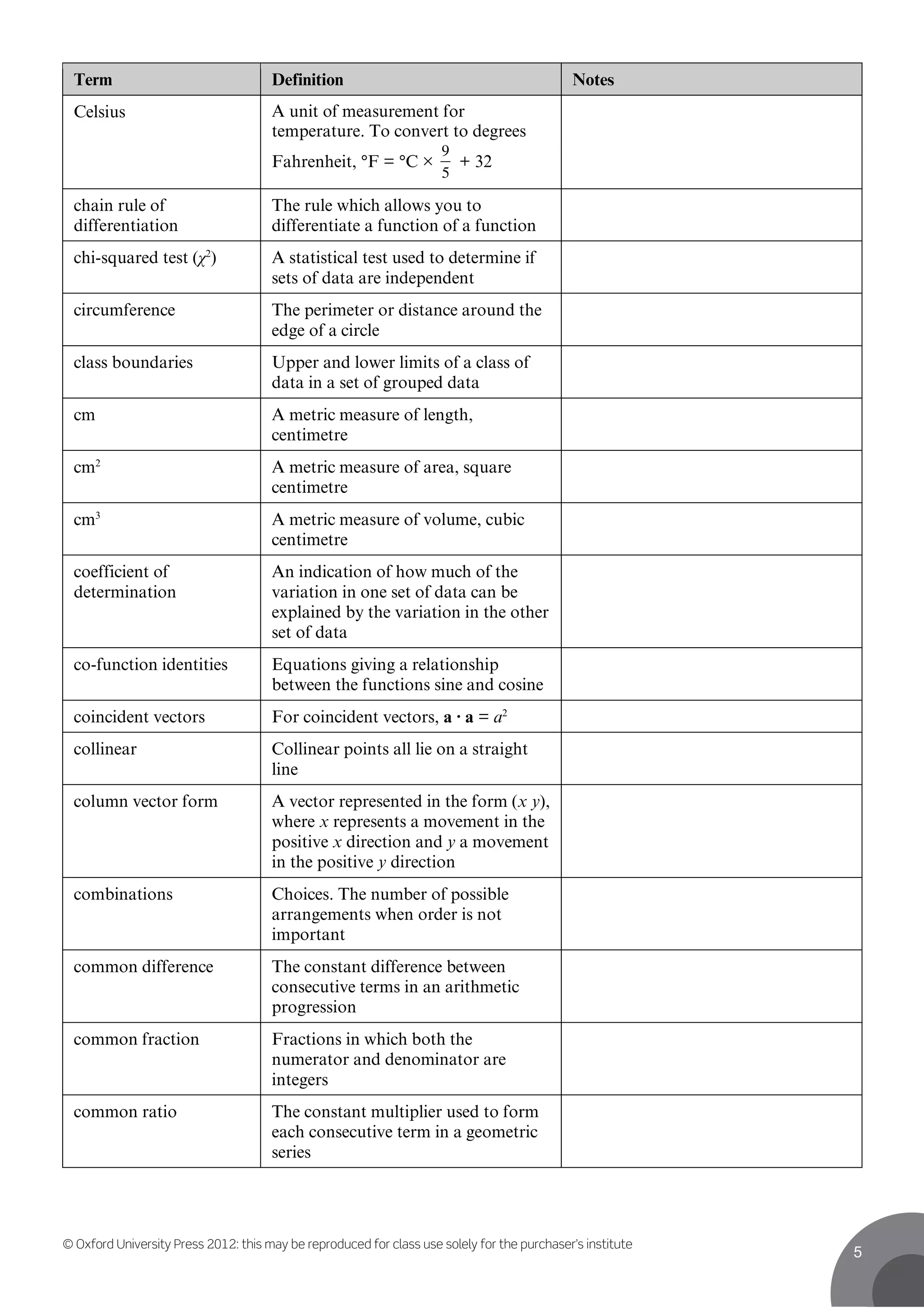
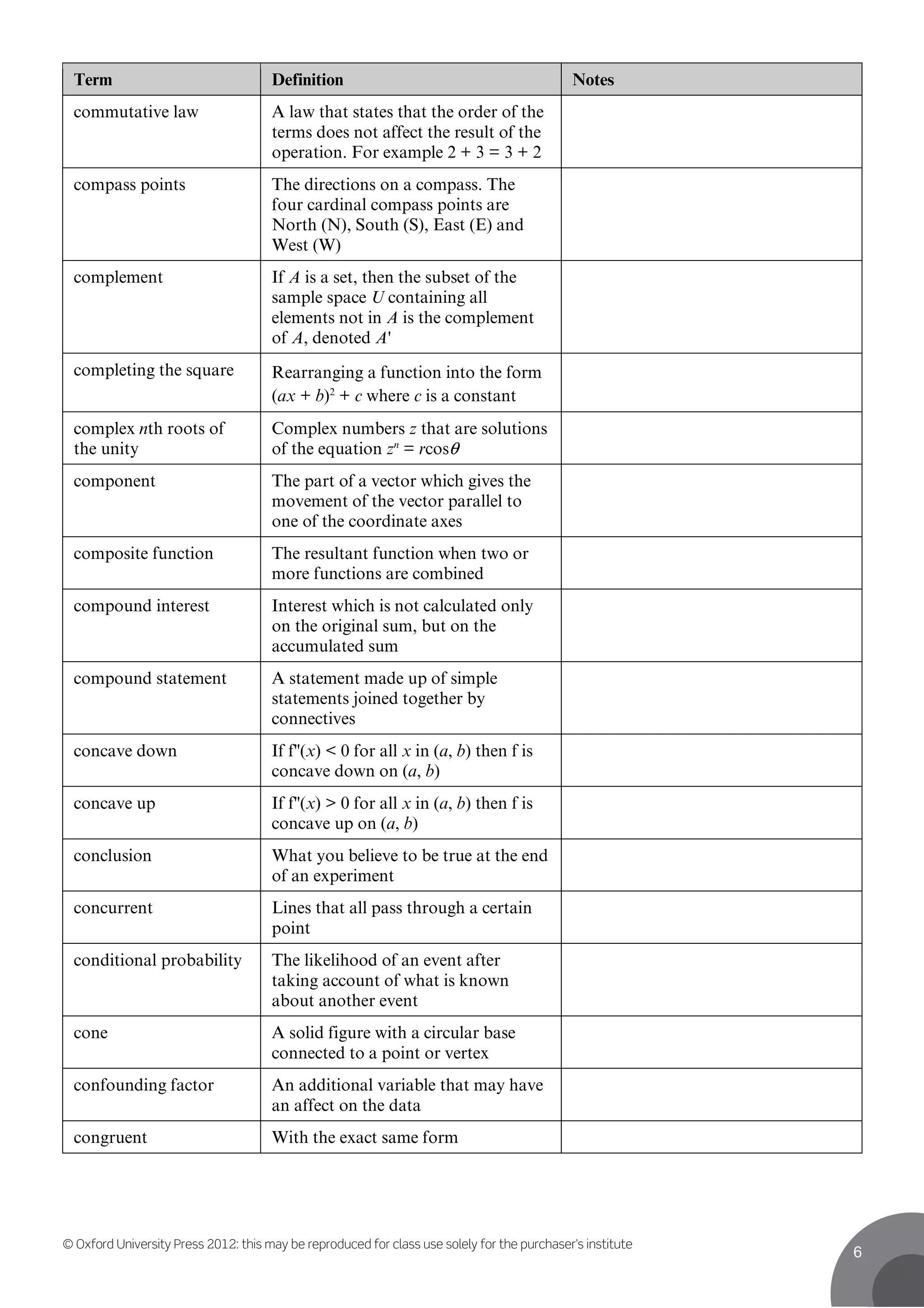
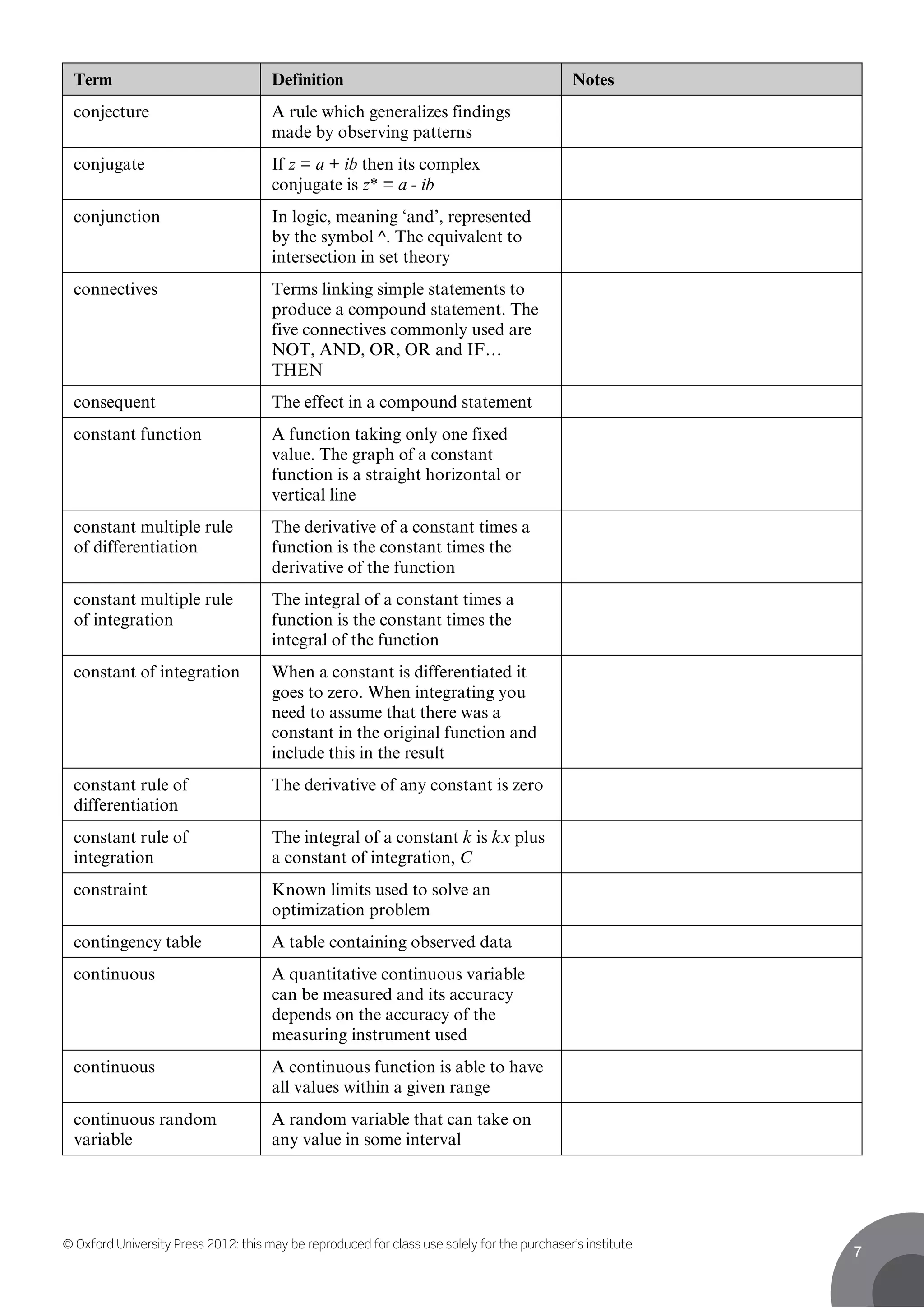
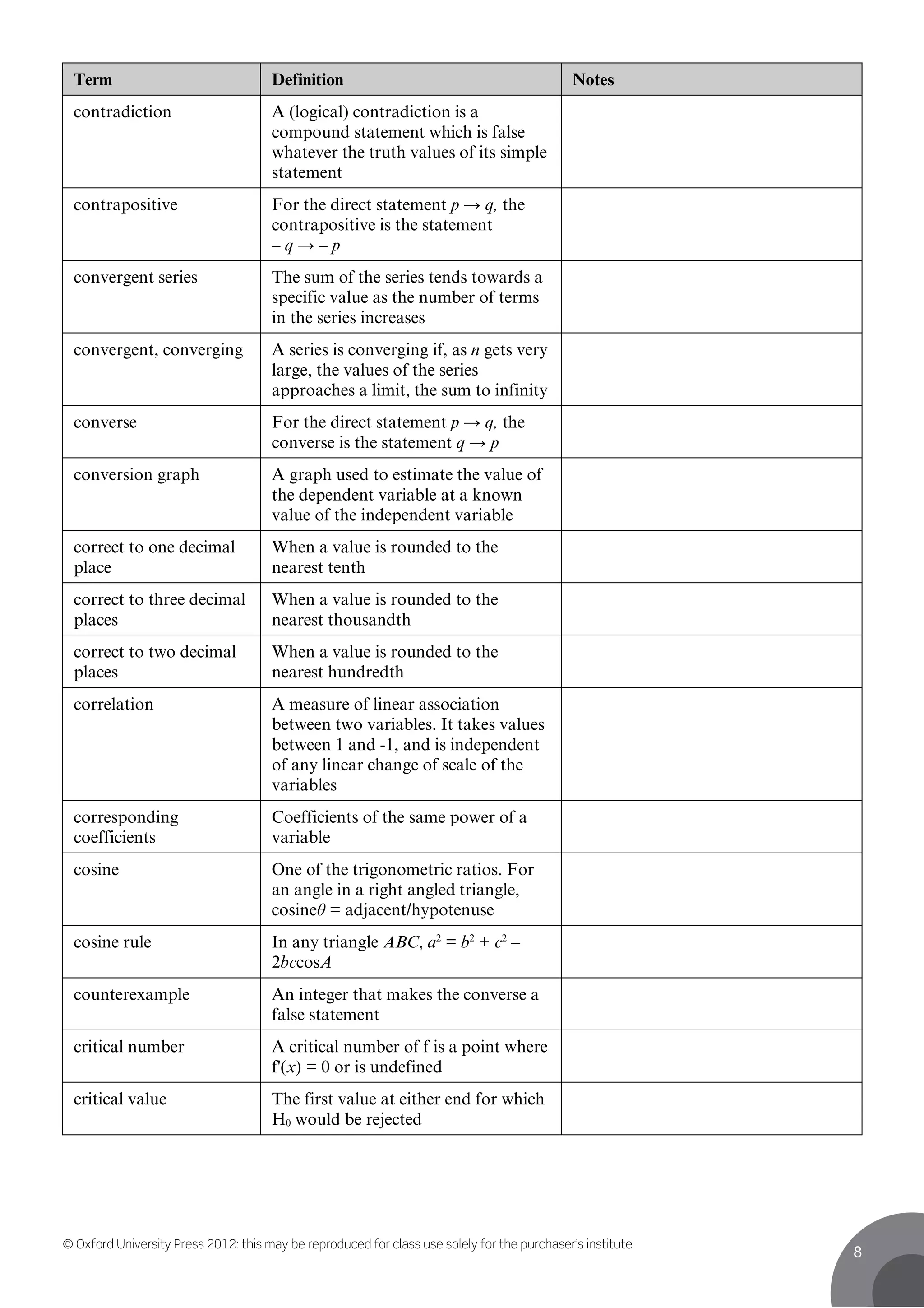
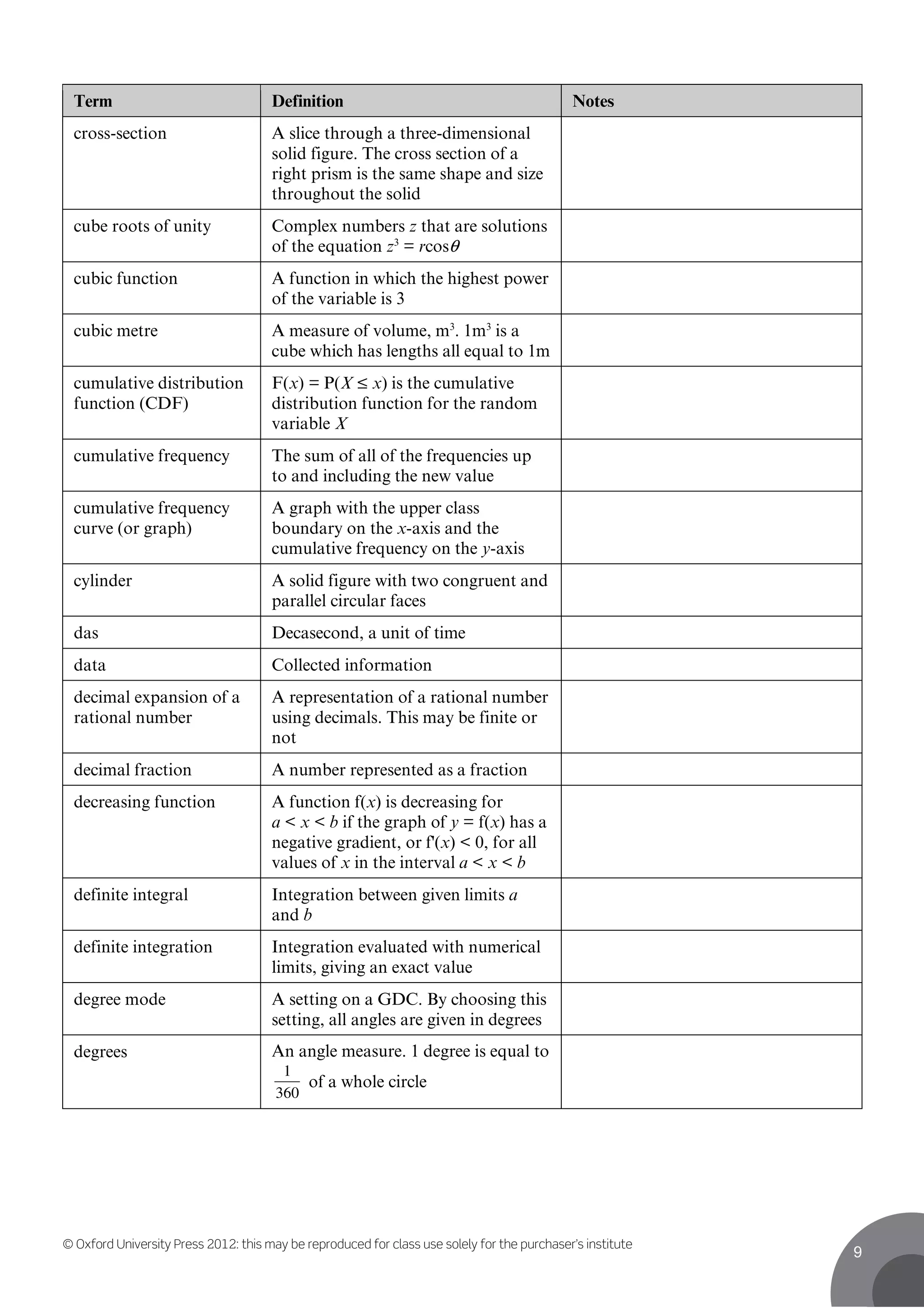
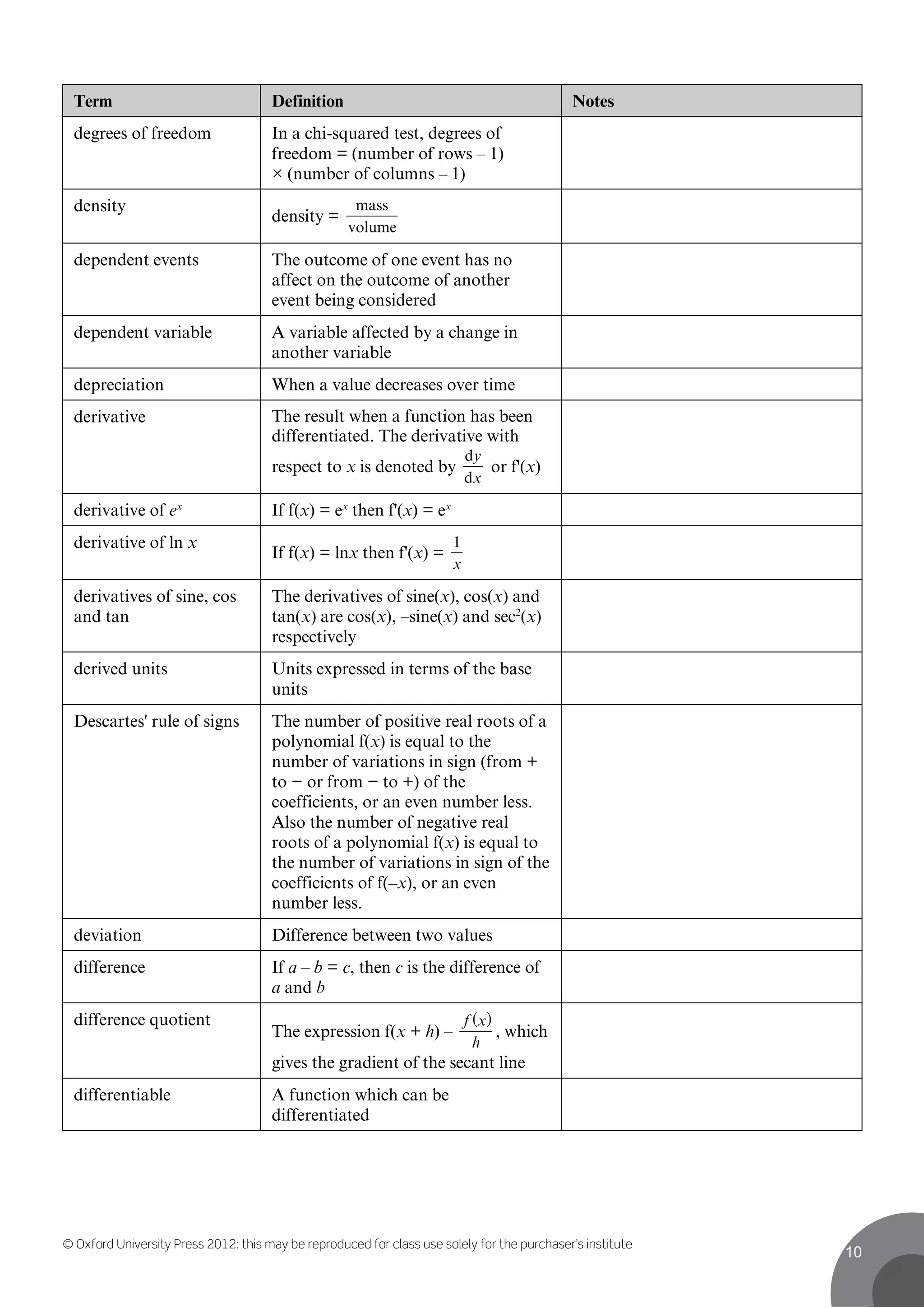

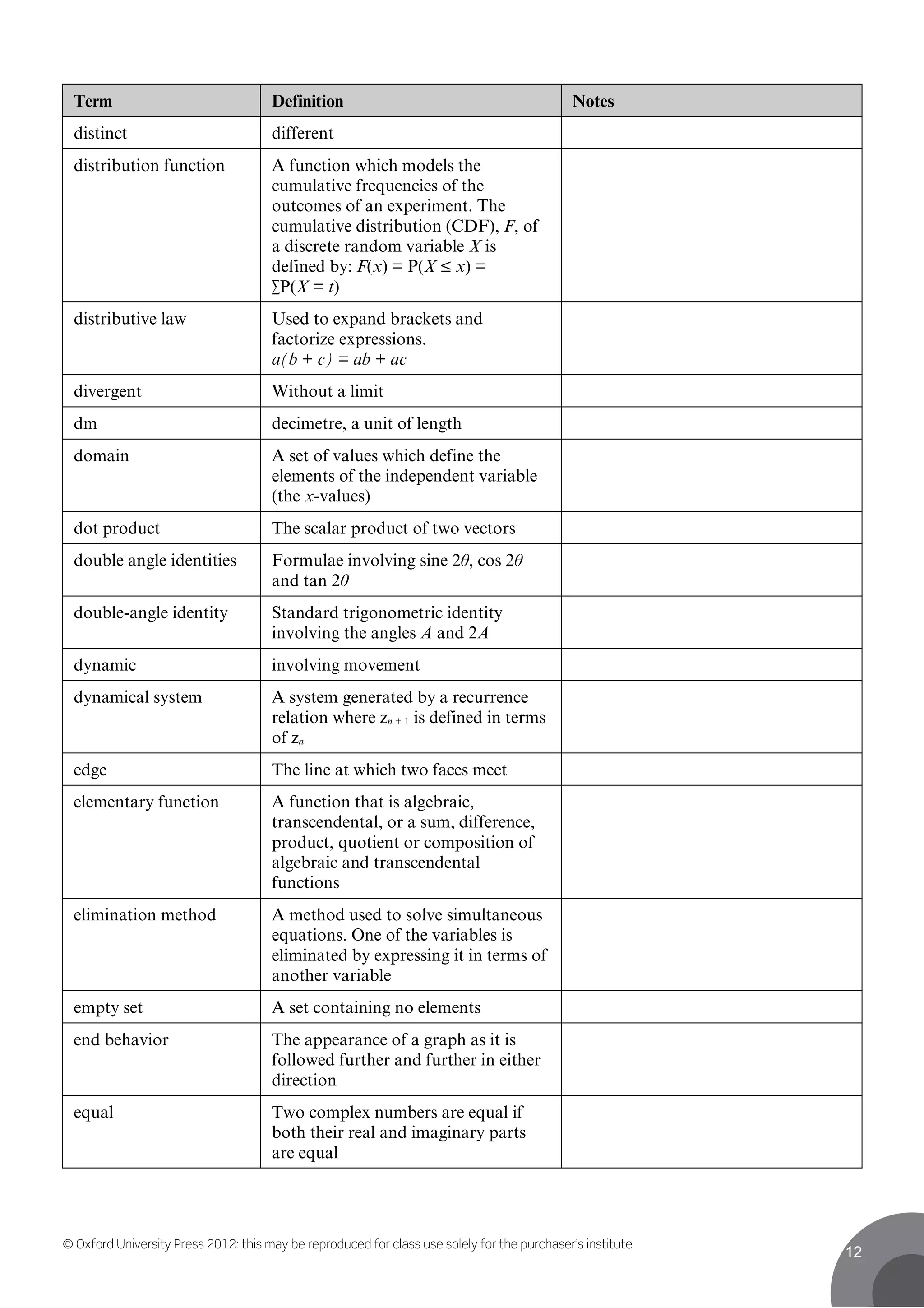
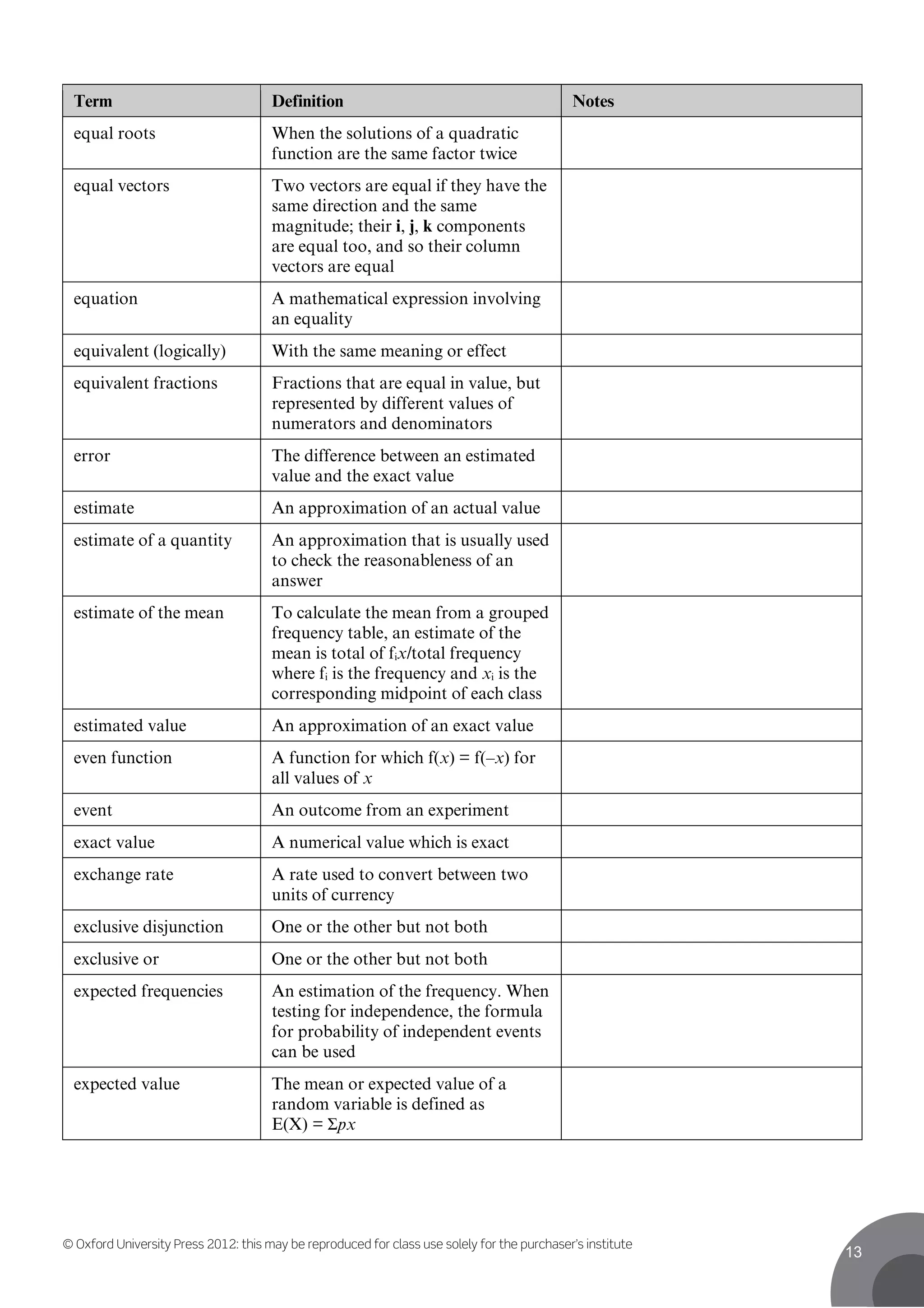
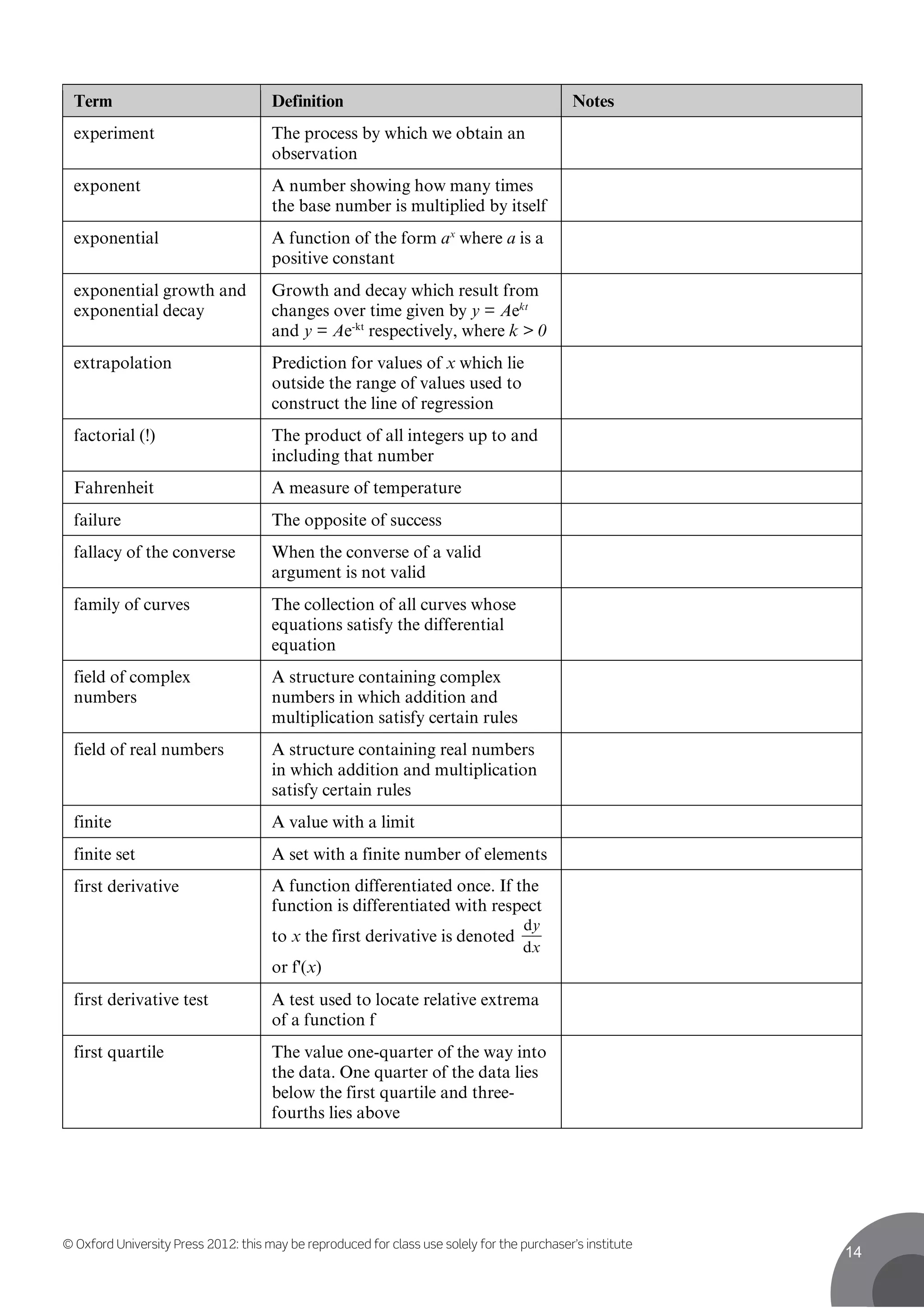
![© Oxford University Press 2012: this may be reproduced for class use solely for the purchaser’s institute
15
Term Definition Notes
five statistical summary A list of information from which you
can get a sense of a data set’s
distribution
frequency density Used, instead of frequency, for
histograms with intervals of varying
width.
Frequency density =
widthinterval
frequency
frequency histogram A visual representation of data using
the class boundaries and the
frequencies
frequency polygon A graphical representation of data. It
plots the midpoints of each class of a
frequency diagram against the
frequency on a graph. It is formed by
joining the midpoints of each class by
straight lines
frequency table A table used to record statistical data,
giving an easy way to view the data
quickly and see any patterns
function A mapping in which each x-value
maps onto one and only one y-value
fundamental theorem
of algebra
A theorem referring to the existence
of the complex zeroes of a polynomial
fundamental theorem
of calculus
If f is a continuous function on the
interval a ≤ x ≤ b, and F is an
antiderivative of f on a ≤ x ≤ b, then
∫f(x) dx = [F(x)] = F(b) – F(a)
g An abbreviation of gram, a measure
of mass
Gaussian plane The plane model of complex numbers,
sometimes called an Argand diagram
general form The general form of a straight line is
ax + by + c = 0 where a, b, and c are
constants
general formula for the
nth term
Denoted by un. By substituting values
for n the general term becomes a
specific term
general formula for the
solutions of a quadratic
equation
A formula used to find the solutions
of a quadratic equation given in the
general form](https://image.slidesharecdn.com/glossary-150122204059-conversion-gate02/75/Glossary-ib-15-2048.jpg)

